Developments
- Details
- Written by: Quintus Potgieter
In the last few years, civil engineering practices in African countries such as Kenya and more notably Nigeria have been investigated. Now, some questions of a recent tragedy might finally get some answers. It was September 12th, 2014 when the Synagogue Church of All Nations (SCOAN) in Nigeria collapsed, killing 115 people. The investigation into what actually caused the collapse has turned into a court case which is now being conducted at the Ikeja High Court in Nigeria. The engineering entities that assisted the investigation were: The Nigeria Building and Road Research Institute (NBBRI), the Council for the Regulation of Engineering in Nigeria (COREN) and the Building Collapse Prevention Guild (BCPG). The entities compiled a report that refuted any claims that terrorism was behind the collapse of the building, and rather made a case for structural failure of the building itself.
The compiled report from the coroner had detailed what exactly made the building fall down:
- Inadequate beams of 750mm by 225mm (should have been 900mm by 300mm)
- Inadequately reinforced columns (should have been reinforced with 12 x Y25 bars or 20 x Y20mm bars. Instead they used 10 x Y20 bars (as seen in the video released by SCOAN).
- Inadequate bearing pressure for the central column due to the 2m x 2m x 0.9m foundations.
- Failure to introduce rigid zones for bracing the structure and did not design the frames as an unbraced structure.
- Failure to provide movement joints that could have absorbed any movement due to creep, contraction, expansion and differential settlement etc..
- 8 out of the 12 main beams of the structure failed because they were undersized, under-reinforced (both in tension and shear), the tension bars were poorly anchored to the column supports and 8 x Y20 was used instead of 14 x Y20.
- The ground floor columns were slender and readily gave in to buckling

In the court case that is currently happening, a witness, Dr Olusegun Oyenuga, a civil engineer, has confirmed that the project, when in the building phase, had no structural engineer. He said: "There was no structural engineer for SCOAN to the best of our knowledge. During the compilation of the report into the collapsed building, no structural engineer for the church came forward. The court needs to educate the public that every structure needs a structural engineer."
The naysayers on TB Joshua's (the pastor who presided over the church) side say the strange aircraft that flew overhead before the building's collapse somehow has something to do with it. "A civil engineer is not necessarily a structural engineer unless registered by the Council of Regulation of Engineering in Nigeria (COREN)," Oyenyuga added. He also gave what he think may have caused the building's collapse: "Our findings revealed that the superstructure was undersized in terms of the reinforcement of the beams and columns, the foundation was also not adequate but it may not have been the case of the collapse. On the bearing capacity of the soil, the maximum bearing capacity should be 800 and what should be ideally used for construction are 330 and the church used 550. This may have been responsible for the collapse."
Another engineer involved in compiling evidence of structural failure, Idowu Alakija, said: "I was a member of the committee that generated a report on the SCOAN building collapse. COREN put up an advert that all engineers involved in the construction of the collapsed building report to the COREN office at Ikoyi but no one showed up. I and some other members of the committee went to the site of the building to conduct some analysis and design tests." COREN refers to the Council of Regulation of Engineering in Nigeria.
Here is a footage from a source that believes the church was downed by the strange aircraft, it is not suitable for sensitive viewers. What is apparent from the video, however, is that structural failure did occur, which sent the building hurtling to the ground. What remains clear is that civil engineering in African countries needs to be thoroughly investigated and revamped so that structural failures are not commonplace in the 21st century history books of African civil engineering.
Source: News24
- Details
- Written by: Quintus Potgieter
The Japanese electronics company, Seiko Epson, have announced that they have technology in their possession that would enable robots to be incredibly precise. Tasks that their robots can perform range from putting a key into a keyhole to knowing how much force is necessary to open that door. The technology could grow to the point where robots thread a needle. The company revealed a piezo force sensor that utilizes technology that they have used in their inkjet printing technology before.
The sensor that they have built accurately calculates what is needed to do a task and then performs that task at the amount of precision it would require.
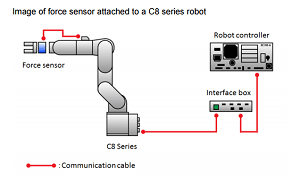 "It changes the way robots can be used. We think the market potential for the force sensor is enormous. To perform complex tasks like this with robots, it has needed really complex software, which has made it impossible for many people. This makes the software a lot simpler, which makes it easier to actually introduce the robots," said the President and Chief Executive of Epson, Minoru Usui.
"It changes the way robots can be used. We think the market potential for the force sensor is enormous. To perform complex tasks like this with robots, it has needed really complex software, which has made it impossible for many people. This makes the software a lot simpler, which makes it easier to actually introduce the robots," said the President and Chief Executive of Epson, Minoru Usui.
Epson is confident that the robots could be used in the biomedical, agricultural and manufacturing industries. They use their sensor technology, which includes "placing a capacitor or resistor in an integrated circuit" that will enable the robot to notice what needs softer care. The sensor costs $7,200 and will work on any Epson robot. They have named the sensor the S250 series and is an efficient addition to assembly robots.
"The new force sensors are a significant development for Epson and for the manufacturing industry in general. As a company dedicated to manufacturing innovation, the new sensors help to expand the applications for robots, and bring us a step further towards achieving our goal of creating the world in which robots support people in a wide variety of situations," said Yoneharu Fukushima, the COO of Epson's Robotics Solutions Operations Division.
Industrial robots are taking over factories, especially in China. Last week Foxconn (in Vietnam) replaced 60,000 of their human workers with robots on their assembly line. Now, with Epson's technology, even more, assembly line factories could look into robotic replacements due to the precision chips that Epson are now selling.
Source: Yahoo Tech
- Details
- Written by: Quintus Potgieter
Another week, another wearable. It seems like every week some university shows off its biomedical health trackers off to media outlets. This time is no different, the US National Science Foundation's Nanosystems Engineering Research Center for Advanced Self-Powered Systems of Integrated Sensors and Technologies (ASSIST) that operates out of North Carolina University is showing their Health and Environmental Tracker (HET). The researchers propose a patch-like device that a person would wear on their chest which would enable vital signs to be observed and data to be produced.
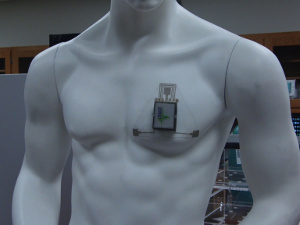 "Our goal was to design a wearable system that could track the wellness of the subjects and in particular provide the infrastructure to predict asthma attacks, so that users could take steps to prevent them by changing their activities or environment," said Alper Bozkurt, a professor of electrical and computer engineering at NC State and who is at the helm of the project.
"Our goal was to design a wearable system that could track the wellness of the subjects and in particular provide the infrastructure to predict asthma attacks, so that users could take steps to prevent them by changing their activities or environment," said Alper Bozkurt, a professor of electrical and computer engineering at NC State and who is at the helm of the project.
The researchers have published their work in the IEEE Journal of Biomedical and Health Informatics under the title: Low Power Wearable Systems for Continuous Monitoring of Environment and Health for Chronic Respiratory Disease.
"This system will permit a better understanding of the impact of increased ozone levels and other pollutants on chronic asthma conditions," the researchers write in their journal. The device will therefore also assist in measuring how a person who doesn't have asthma can develop asthma due to pollutants in the air. The setup also has a microphone that will listen to the amount of wheezing someone does and will be able to diagnose their conditions more accurately along with the sensors that connect to the head and chest.
"The data from each sensor is continually streamed to a peripheral data aggregation device and is subsequently transferred to a dedicated server for cloud storage. Future work includes reducing the power consumption of the system-on-chip including radio to reduce the entirety of each described system in the sub-milliwat range," the researchers wrote.
What we are seeing in the wearables industry is that biomedical research and the monitoring of health is the modus operandi of a lot of researchers right now. Tracking health and technology is something that might save people's lives one days and that is what the engineers are essentially wanting to achieve.
- Details
- Written by: Quintus Potgieter
Industrial control systems (ICS) will be under threat of being infiltrated by cyber criminals says the Allianz Global Corporate & Speciality group. The company supply companies with insights into risk factors and how that might impact their future business. They have now released a press release to warn engineers that they might want to put extra security measures into their industrial control systems as Industrie 4.0 continues to grow into an interconnected network of industry.
 "Continuous monitoring and predictive maintenance of automated production lines will reduce small scale frequency losses and increase equipment lifetime. Supply chains will be better monitored, more predictable and visible with improved tracking options and losses reduce from spoilage or expiration," said Michael Bruch, Head of Emerging Trends at AGCS.
"Continuous monitoring and predictive maintenance of automated production lines will reduce small scale frequency losses and increase equipment lifetime. Supply chains will be better monitored, more predictable and visible with improved tracking options and losses reduce from spoilage or expiration," said Michael Bruch, Head of Emerging Trends at AGCS.
Nigel Pearson, global head of fidelity at AGCS said: "A number of ICS still used by manufacturing and utility companies today were designed at a time before cyber security become a priority issue." This has been proven by the taking down of a utility's power in the Ukraine. AGCS also point out that cyber-attacks have also happened on the Israel National Electricity Authority and recently a German nuclear power plant was also targeted.
The AGCS's concerns were published in a magazine named Global Risk Dialogue which focuses on "corporate risks and insurance", cyber risks and smart factories. "Overall loss potential is rising significantly, creating high accumulation potential with larger and more complex claims," Bruch added.
Warning factories is all good and well, however, what measures can these factories take to protect their industrial control systems from being attacked?
Kaspersky group have been quite vocal about the fact that they are working around the clock on securing smart factories and their Industrial Internet of Things networks. The United States Industrial Control Systems Cyber Emergency Response Team has detailed what areas to look at and secure in their own attempts to influence more security in smart-factories. They say: "Organizations should isolate ICS networks from any untrusted networks, especially the internet. All unused ports should be locked down and all unused services turned off. Organizations should also limit remote access functionality wherever possible. Modems are especially insecure."
"An ICS may be interconnected with other systems, such that failures in one system or process can easily cascade to other systems within or external to the organization. Impact propagation could occur due to both physical and logical dependencies," said the US National Insitute of Standards and Technology.
For now, the advice is lock-down on any internet-connected items while you can and hope that a cyber attack doesn't happen. Companies are releasing their Industrial Internet of Things packages that will include security. Some factories have tried to be ahead of the game and bought unsecured industrial setups that were taken down by hackers, as we have seen in the last year and a half. However, there are steps a factory can take by themselves but soon the security will be done by a third party and you won't have to worry about it. There on out you will be able to reap the benefits of using the Industrial Internet of Things.
- Details
- Written by: Quintus Potgieter
In the recent weeks, we have been following China's takeover of multiple companies in 2016, notably, the takeover of Kuka Robotics. The Midea Group has been trying to make offers to German robotics firm, Kuka, but it seems there is a stalemate occurring. According to the Wall Street Journal, Germany is hoping to buy Kuka before Midea does, and retain the company's European ownership. They would have to provide a counteroffer of more than $5 billion, which Midea was prepared to pay.
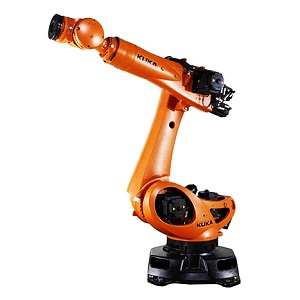
In even stranger developments, Chinese robotics experts are starting to speak out against the country's attempts at building a robot empire. The South China Morning Post (SCMP) ran a story with the title: How the world's largest market for industrial robots is allegedly propped up by deceit . In the article, Wang Cairong, the executive director at the China Artificial Intelligence Robot Industry Alliance said: "The industry is now in a subsidies-driven bubble. It's time to launch a nationwide campaign to investigate these companies which have received subsidies through deceit or illicit connections."
If these claims are true and substantiated, perhaps Kuka would prefer being bought by European investors instead. However, China is banking on industrial robotics, with a five-year plan that is currently in full swing. 66,000 industrial robots were sold in 2015, which was 16 percent higher than sales in 2014, says the International Federation of Robotics. SCMP did confirm that local governments "at the provincial and city levels" have been garnering funds with government granted subsidies to improve the operation of robotics industry in the country.
"Many robotics companies obtained subsidies by claiming they have key technologies on par with those of foreign competitors," Wang maintained. "It has been an open secret within the industry that many Chinese robotics firms, including some companies that are listed, have cheated to obtain subsidies. Some have even formed several new companies to apply and receive one-off subsidies."
The whistle has been blown, it seems. Wang is calling for an audit of these 'so-called' robotics companies so that any corruption can be uprooted.
Nevertheless, industry experts are saying the sale of Kuka to Midea Group should go ahead. Daimler AG's chief executive Dieter Zetsche said: "There's no evidence that a sale of Kuka to China would be a risk." Furthermore, anonymous sources in the automotive industry said: "We don't understand the uproar about this. There are enough German automotive and other industrial operations in China that the Chinese government surely knows already how we produce things."
Here's a
| Date announced | Target | Country | Industry | Acquirer | Deal value excluding debt, in billions |
| Feb 3 | Syngenta | Switzerland | Agribusiness | ChemChina | $44.1 billion |
| Feb 17 | Ingram Micro | United States | Technology | Tianjin Tianhai Investment Development | $6.1 billion |
| Jan 15 | General Electric | United States | Consumer Products | Qingdao Haier | $5.4 billion |
| May 18 | Kuka | Germany | Robotics | Midea Group | $5 billion + |
| Jan 12 | Legendary Entertainment | United States | Leisure and recreation | Dalian Wanda Group | $3.5 billion |
- Details
- Written by: Quintus Potgieter
It's the year 2016 and we are still seeing marvels of engineering being built all around the world. Switzerland has just taken the crown from Japan for having the longest railway line in the world. The previous record was 33,49 miles, a railway tunnel known as the Seikan rail tunnel. The United Kingdom and France Channel tunnel is now the third longest in the world. The new Gotthard tunnel is 35 miles long and cuts under the Swiss Alps connecting north and south Europe. It goes from Erstfeld to Bodio and will see 325 trains passing through the tunnel every day.
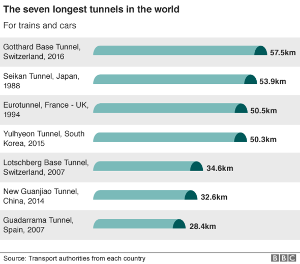
Gotthard's tunnel is now open for business and is functioning. The first trains packed with ticket winners set off today, officially opening the tunnels. The construction took 17 years to complete with a team of 2,600 workers tirelessly engineering the tunnel.
40 million tons of freight will pass through the tunnel every year (starting in December 2016) and will minimize the need for trucks on the roads, which will, in turn, reduce congestion in Switzerland and be better for the environment in the long term. The government officials of Switzerland have been saying this connection through Europe is coming at the right time due to the push for cleaner and more eco-friendly engineering.
The drilling of the tunnels kicked off with four humongous drills that broke through the mountains in 2003. Sevens years later the civil engineers and the construction workers had blasted through 73 different kinds of rock. 28 million tons of rubble was produced. Euro News confirmed that 9 workers had died in the 17-year long process. The tunnel cost $12.3 billion and was fully paid off through taxes and other investment endeavors.
Swiss President Johann Schneider-Ammann said: "The new tunnel fits into the European railway freight corridor, which links Rotterdam and Genoa. Aside from saving time, more merchandise can be carried through the Alps."
- Details
- Written by: Quintus Potgieter
Have you ever been out of power for long stretches of time, making you reach for your phone and shout down the municipality's ear? It might have been a grid fault that took a while to find and repair. Sometimes the equipment at the utility has been damaged as a result. However, thanks to engineers at Binghamton University these faults will soon be found quicker due to SSA (Singular Spectrum Analysis).
"Theoretically, the SSA algorithm is an optimal approach for accurate and quick detection. However, it had not been adopted in real-world engineering applications. We adapted and improved the algorithm for the new application in power grid areas," said Yu Chen, an associate professor of electrical and computer engineering at Binghamton.
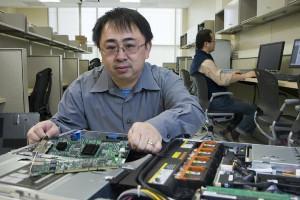
Yu Chen and another engineering co-author worked on a paper that makes a case for a grid system that goes down if even one circuit malfunctions. Grids that are currently operating can continually supply energy when circuits go down, which then forces engineers to look through multiple sources for where the fault could be. If one thing failed and made the entire system fall down, they could tell what failed quicker. The engineers have tested their system and say that they would be able to find faults much quicker than the current way of sifting through multiple circuits to find what could be wrong on multiple complete circuits that make up a grid.
"At the current stage, the algorithm can only detect and locate problems, and it cannot predict the future problems. It laid a solid foundation for the next step: prediction. Being able to detect subtle changes in the power grid promptly, our approach has the potential to predict future problems by including a power system model," said another one of the authors, Ning Zhou.
The paper is titled Singular Spectrum Analysis based Quick Online Detection of Disturbance Start Time in Power Grid .
Source: Science Daily
- Details
- Written by: Quintus Potgieter
Telkom is South Africa's premier telecommunications company who supply wireline and more recently wireless communication solutions. The company's latest attempts at supplying telecommunications to the country involve LTE technology and fiber internet solutions. Introducing new technologies has translated into needing more engineers to assist with building an infrastructure that facilitates uninterrupted internet to the greater South African public. Telkom was one of the first companies in South Africa to offer uncapped broadband to the country through asymmetric digital subscriber line (ADSL). This meant that the country would get faster internet on copper lines. Only one problem. Copper Cable theft ran rampant in the country.
It is estimated that cable theft has cost South Africa $321 million (ZAR5 billion). In the last year alone, Telkom has forked out $12.8 million (ZAR200 million) to repair cable theft damage and to organize security companies to safeguard their copper facilities.
Telkom's group executive for communications, Jacqui O' Sullivan said: "It is clear that the price of copper and its strong demand in international markets are catalysts of this crime." She went on to say, "These criminals now target our manholes armed with customise heavy duty vehicles, allowing them to hitch the cable to the vehicle and drive out kilometres of cable, cutting off thousands of customers, in a single incident."
The company is trying it all it can to ensure their customers migrate to wireless technologies that are less of a target for criminals, namely, LTE and fibre technologies. Even Usain Bolt has joined the migration:
However, just as 4G/LTE becomes the norm for South Africans, 5G is being tested by engineers in the United States. 5G will be the powering force behind the Internet of Things. Huawei has reportedly said that their tests have been successful. The company said that they were able to successfully improve spectrum efficiency. We should be seeing the advent of 5G becoming part of our daily lives perhaps as soon as 2017, according to network engineers in the industry.
Source: The Citizen
- Details
- Written by: Quintus Potgieter
In the fast-changing world of engineering, staying afloat in terms of qualifications, credentials and knowledge is a tough business. Luckily, it is becoming easier to remain in an industry, work hard at it, but at the same time gain more knowledge on the side that will further you in your industry. The other scenario is, you may be later on in life and not able to go all the way back to university to gain the credentials that would get you a job in an engineering career right now. What do you do? Who do you turn to? With reference to what individuals are doing around the world, you might be able to have a deeper understanding of what your next move could be in terms of gaining more knowledge and in turn being a viable option for an engineering job, or keeping that engineering job you already have.
 Singapore:
Singapore:
Ms Poh Li Ping wanted to change up her credentials in the kind of civil engineering she was doing. She felt as if she had settled for a cubicle job and rather wanted to get out there and oversee actual civil engineering in practice. She was able to take a bridging course at the Institution of Engineers, Singapore (IES). On top of that, she had to take a master's programme in civil engineering, a six-month course from the National University of Singapore. As a result, she can now get out of the office and go and oversee civil engineering construction projects and can be involved in the design process of projects.
"By attending all these extra courses, this has opened up one more door for me for future opportunities," said Poh.
Poh Li Ping's extra layers of qualifications will come in handy due to recent studies in Singapore that revealed engineering services in the country - especially in the civil industry - are experiencing retrenchments.
Experts in Singapore are warning that remaining employable in engineering industries will depend on whether or not the engineers build on their knowledge. Nanyang Technological University professor Chew Soon Beng told TODAY that the nature of engineering work has changed and thinks engineers should build on their "financial and econometric" skills.
South Africa
In South Africa, if you already have qualifications in engineering and want to stay up to date with what's happening as the industry changes, there are online institutions that offer bridging courses or just general video courses to become even more proficient in the type of engineering that is being done. Some engineers cannot afford to go all the way back to university to continually build on their credentials and know-how. You can get professional certificates of competency and advanced diplomas in a certain kind of engineering that could lead to a job in an engineering industry.
- Preparation Maths, Physics, and Chemistry
- Fundamentals of Engineering Chemistry
- Fundamentals of Engineering Maths
- Fundamentals of Engineering Physics
You can do these courses globally seeing as though it's online education. However, specifically in South Africa, if you wish to go to another institution and continue to build on your engineering qualifications after doing an advanced diploma, you would have to go to the South African Qualifications Authority and convert your qualifications to the South African standard.
The Dean of Engineering at the Engineering Insitute of Technology (who host the fundamentals courses mentioned above), Steve Mackay, spoke about engineering education that works, recently. He said: "We really need to focus on the basics, which is, having outstanding industry experienced instructors involved with the students. That's what really matters...people who have industry experience."
What remains clear is that people who are already in engineering jobs should continue to build on their experience in the industry but at the same time stay fresh with knowledge whilst the engineering industries change with the times.
- Details
- Written by: Quintus Potgieter
Sound engineering is not an easy feat. Neither is music engineering. Clarence Adoo is a trumpeter who was paralyzed from the neck down after a car accident two decades ago, rendering his arms unusable, thus playing the trumpet was going to be problematic. Seven years after his accident, an engineer named Rolf Gelhaar built him a breath-controlled instrument named Headspace. As the years passed they attempted to get the Headspace working but have now perfected some of the technology and built a new iteration named the HiNote.
Vahakn Motassian, Gelhaar's son, was the main engineer involved with building the new instrument. He said, "Most digital interfaces lack expression. Notes are just on or off. There are no off-the-shelf truly expressive devices." So, Motassian started a company dedicated to this field of research and development named Human Instruments.
The HiNote utilizes breath pressure sensors and a piece of software that Adoo can control and influence to make music with:
Talking to The Guardian, Motassian said: "The software has gone way up in sophistication - and that inspires me to be more creative. It will allow me to do things that I've never been able to do. Most importantly, it has a more natural way of blowing, so I can produce new effects." The video shows Adoo creating some very interesting musical sounds that sound a bit like an episode of the X-Files.
"The harder you puff, the harder the notes roll," says Human Instruments in the new video with Adoo. The engineers are hoping they could deliver a product to the music market that would enable disabled people to make music. The other technology they are working on is a sort of 'touch board' (see video below) that produces electronic sounds based on where the user is touching the board.
Human Instruments is one of many start-up companies that are working on musical instruments for disabled people, however, for a trumpeter like Adoo who lost his ability to play and use the trumpet, Human Instruments has breathed new life into his music making abilities with the new HiNote technology.
- Details
- Written by: Quintus Potgieter
What do you get when you put drone technology and a Russian engineer into the same room? They build something out of a video game, apparently. A Russian YouTuber named Valplushka has shown off a drone resembling that of a city scanner from the game Half Life 2. The city scanners are used by the Orwellian government in the game and is used for the purposes of surveillance and protecting the city. The video shows a prototype the Russians have built that looks precisely like the city scanners in the game.
The YouTubers built a base frame for the quadrocopter out of carbon fiber. "The main materials used are: carbon fiber, expanded polystyrene. Flight controller DJI Nzaza-M Lite without GPS," their video description read. To get it into the sky they used AX-2810Q-750KV Brushless Quadcopter motors and were also equipped with a GoPro camera. The drone is now 2.7 feet long and 1.9 feet high.
Check the videos out and see how he utilized already engineered products to build a new drone that could very well be used as a film prop. Let's just hope the government doesn't get any ideas:
- Details
- Written by: Quintus Potgieter
It's the year of engineering stretchable, wearable electronic devices for the impending future of wearing technology on our bodies, clothing etc. Nanoengineers, electrical engineers, mechanical engineers and computer engineers have never put this heads together quite like this before. Researchers at The University of Wisconsin-Madison are showing off their own flexible, wireless, wearable integrated circuits. Their studies were published on the Wiley Online Library in the Advanced Functional Materials journal.
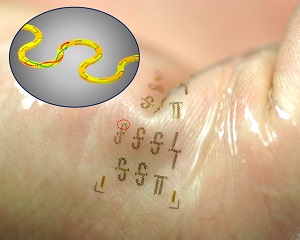
Professor in Engineering at UW-Madison, Zhenqian Ma was the lead author on the study highlighted the fact that their integrated circuits could assist engineers in the wearables market that could potentially utilize their technology to further wearable technology. The big reveal from the engineers is that their circuits will operate at 40GHz and utilize 5G networks so that they are also interconnected and synced with each other thanks to the Internet of Things.
Ma said: "We've found a way to integrate high-frequency active transistors into a useful circuit that can be wireless. This is a platform. This opens a door to lots of new capabilities."
The researchers think their new wearable circuits could be particularly useful in the biomedical field due to the circuits being very skin-like in the way that they are worn. Health monitoring is one of the big things engineers have built into wearables which we can see in devices such as the Fitbit et al. The researchers have ten years of research and development in transistor active devices and are confident they are on to a winner with their stretchable circuits.
The researchers have used minuscule power transmission cords to power the circuits that sidewind on the surface of whatever it has been placed on. The s-curved nature of the power transmission cords means that it can be stretched, somewhat. Some analysts are calling the invention the fastest wearable devices currently available and will be very instrumental in studies pertaining to integrated wearable circuits.
- Details
- Written by: Quintus Potgieter
Ikea, the home furnishing store, made a pledge last June that it would be investing in the future of renewable energy. The intention is to only use renewable energy to power the chain of home improvement stores by 2020. According to the Guardian, Ikea enjoyed a comfortable profit of $33 billion in 2015 and will be using some of that to fund solar photovoltaic solutions and wind power. They will be injecting $660 million, on top of the $1.6 billion they have already invested into renewable energy. They will be accountable for 314 wind turbines and currently utilize 700,000 solar panels on shop roofs. If only more companies joined the queue of commercial entities wanting to better the future.
 The company wants to have a "positive impact" on the climate through the investment of clean energy and say the only way to do this is to go "all in" and throw their weight behind the cause. They also want to export the energy to impoverished nations by becoming a net exporter within the next four years and currently produce 53% of its current energy on renewables. Companies operating their own wind farms and solar plants? Not unheard of. Walmart secured a deal with Pattern Energy who operate a wind farm. Walmart reportedly will buy up to half of the 200 megawatts the farm produces.
The company wants to have a "positive impact" on the climate through the investment of clean energy and say the only way to do this is to go "all in" and throw their weight behind the cause. They also want to export the energy to impoverished nations by becoming a net exporter within the next four years and currently produce 53% of its current energy on renewables. Companies operating their own wind farms and solar plants? Not unheard of. Walmart secured a deal with Pattern Energy who operate a wind farm. Walmart reportedly will buy up to half of the 200 megawatts the farm produces.
Perhaps Ikea could grow their renewable energy by tenfold and start releasing their very own home-based photovoltaic cells that can be sold just like the home furnishing items in their store. Companies have an irrefutable business opportunity in the renewable energy game and could capitalize on the market like the Tesla PowerWall and some of its competitors.
Speaking of Tesla PowerWall's competitors: Mercedes has released the prices for their very own photovoltaic cells. The cells are manufactured by Daimler ACCUmotive and will now be purchasable by the German public, with added territories soon. The price per unit will be between $9,000 to $10,000, which includes installation rates. But how does it stack up against the PowerWall and Nissan's latest battery announcement?
These are estimated numbers and will not be exactly correct, however, they are a good indication of the prices you can expect to be paying. Prices can change based on which country the batteries are to be purchased in.
| Tesla PowerWall | Mercedes | Nissan xStorage |
| Stores 6.4kWh | Stores 2.5kWh | Stores 4.2kWh |
| Storage stacking: 9 PowerWalls can be connected to equal 58kWh | Storage stacking: 8 Mercedes batteries to equal 20kWh | Storage stacking: 8 batteries to equal 20kWh |
| Price: Up to $7,000 each including installation | Price: Up to $10,000 each including installation | Price: $4,500 each including installation |
For reference, an average person in the United States uses 30 kWh per day.
Sources: The Guardian & Tech Insider
- Details
- Written by: Quintus Potgieter
Researchers from the National University of Singapore have invented a new method of camouflaging sensors to the point where they are considered invisible. Professor Qiu Cheng-Wei from the Department of Electrical & Computer Engineering at NUS Faculty of Engineering was at the helm of a team that is slamming their flag down on the world's first "multifunctional camouflage shell" that is invisible in thermal and electric environments. This means that anything that produces heat or electricity while it operates can be "invisibility cloaked".
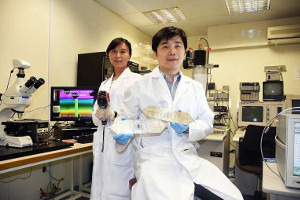
"We have designed a camouflage 'shell' that not only mimics surrounding thermal fields but also electric fields, both at the same time. The object under camouflage becomes truly invisible as its shape and position cannot be detected in terms of both thermal and electric images," said Cheng-Wei.
The military uses for this kind of technology would make quite a lengthy list. Cheng-Wei weighs in on the militarization of such a technology, he says, "This introduces a defence advantage, where the enemy cannot see the soldier, but the soldier can detect the enemy."
The shell could mask the heat signatures that would show up on any camera or sensor looking for heat signatures or signs of electrical behaviour or fields. The team utilized a thin copper shell that attempted to mask the several deviations and differences of heat and electricity.
"Our camouflaging shell will open up a new avenue for advanced sensing and security systems. Sensors which are used to monitor current and heat flow in strong voltage or high-temperature environments are easily damaged. Our camouflaging shell hence protects such sensors from the harsh environment and at the same time enhance the accuracy of the hidden sensor, as the shell will eliminate any distortion around the sensor. This attribute is significant in our study of other applications such as using the camouflaging shell on special mission fieldtrips. The team is working on developing multifunctional invisible sensors that have instantaneous stealth ability," Dr Qiu told PHYS.
The team of engineers used the camouflaging of chameleons as the natural inspiration for the project. Dr Qiu said, "The skin of a chameleon is made up of several layers of specialised cells containing various pigment while the outermost layer is transparent...Our team's invention can be seen as an improved 'skin' for the chameleon such that it will become invisible when it appears in front of thermal and electrical signal detectors."
- Details
- Written by: Quintus Potgieter
Dubai is banking on 3D printing in a big way. The country has announced their 3D printing strategy. The strategy is being enforced by Sheikh Mohammed bin Rashid Al Maktoum, the Vice-President of Dubai, who is confident that additive manufacturing is definitely the way to go when it comes to civil engineering.
In a statement, Al Maktoum said: "We implement what we plan, and we pursue actions, not theories. The rapidly changing world requires us to accelerate our pace of development, for history does not recognise our plans bout our achievements." And what exactly have they been planning that is now being implemented? A fully 3D printed office.

This is just the first in many presumptive projects, due to the fact that Dubai wants to be the world leader in additive manufacturing by 2030, as explained in their strategy. The strategy also details three key areas of focus in the 3D printing world: construction, medical products, and consumer products.
"We announce today the opening of the first 3D-printed office in the world, after less than a month of launching Dubai 3D printing strategy which showcases a modern model of construction. This is an experience we present to the world on implementing future technology in our lives, and it represents a new milestone for the UAE as a global leader in strategic achievements," Al Maktoum said.
The engineers who worked on the 3D printed office reportedly used a "special mixture of cement" and building material engineered in the UAE and the United States which allegedly cut labour costs by 50%. The building utilized mobile industrial printers which printed the building in 17 days after which minimal interior and exterior work was done in 2 days.
The office looks beautiful in and out and is being dubbed "the office of the future".
The Dubai government says the printing strategy they have outlined will inject $300 billion into the world economy by 2025.
- Details
- Written by: Quintus Potgieter
Are you using intelligent lighting systems in your business or your home? If the answer is no, then the question is, why not? The intelligent lighting systems market will make $5 billion annually by 2026 if recent estimates are to be believed. That would mean by the year 2026, the intelligent lighting systems market would have doubled what it is currently is. The estimations were made by Future Market Insights.
 Commercial buildings are the customers delivering the most income to the market due to more buildings being built and lighting systems being installed into them. They control 40% of the current intelligent lighting systems market. According to the research, North America is the largest economic contributor. Gotta provide lights to all of those business offices! The days of flicking a switch to turn a light on and flick a switch to turn them off are already a distant memory in some commercial buildings and even homes. The more the price of LED decreases, the more intelligent lighting systems can be built.
Commercial buildings are the customers delivering the most income to the market due to more buildings being built and lighting systems being installed into them. They control 40% of the current intelligent lighting systems market. According to the research, North America is the largest economic contributor. Gotta provide lights to all of those business offices! The days of flicking a switch to turn a light on and flick a switch to turn them off are already a distant memory in some commercial buildings and even homes. The more the price of LED decreases, the more intelligent lighting systems can be built.
However, the divide that the industry is experiencing is in the decisions of whether to continue creating wired systems or move over to wireless systems. According to the research, wireless lighting systems are becoming more popular and has basically taken over the wired lighting systems due to practicality and less space usage.
The companies currently thriving with intelligent lighting engineering:
- General Electric
- OSRAM Light AG
- Eaton Corporation PLC
- Legrand S.A.
- Koninklijke Philips N.V.
- Acuity Brands, Inc.
Elsewhere, in Australia, they are about to test out their first intelligent streetlights in Adelaide. These have been around for quite some time in a host of other countries, cutting the amount of emissions needed to power streetlights. The smart-lights have motion sensors that will turn the streetlights on when movement is detected but will power down, somewhat, when they are not needed. They also have an overly-dramatic video to prove that they are definitely getting smart lights in Adelaide.
- Details
- Written by: Quintus Potgieter
Carnegie Mellon University has been observing machine-learning algorithms due to unclarity of how the machines decide between certain categories. The engineers are looking at how the algorithms decide between: "credit, medical diagnoses, personalized recommendations, advertising and job opportunities."
 "Demands for algorithmic transparency are increasing as the use of algorithmic decision-making systems grows and as people realize the potential of these systems to introduce or perpetuate racial sex discrimination or other social harms," said Anupam Datta, associate professor of computer science and electrical and computer engineering.
"Demands for algorithmic transparency are increasing as the use of algorithmic decision-making systems grows and as people realize the potential of these systems to introduce or perpetuate racial sex discrimination or other social harms," said Anupam Datta, associate professor of computer science and electrical and computer engineering.
To see machine-learning in practice, head to Google Images and type: 'Professional hair'. Observe the results. Then type in 'Unprofessional hair' and observe the results. This is an example of how Google Images' algorithm has learned from the websites that have categorized unprofessional hair by using those images in the past. Therefore, when you search for 'unprofessional hair' you will see the bias the internet as a whole has and not because that's what Google thinks.
Ultimately, Carnegie Mellon University now wants to understand why machines are learning and applying these kinds of algorithms the way they do. The university is measuring what they call Quantitative Input Influence (QII). "Some companies are already beginning to provide transparency reports, but work on the computational foundations for these reports has been limited. Our goal was to develop measures of the degree of influence of each factor considered by a system, which could be used to generate transparency reports," Datta said.
The researchers say that the dataset that was initially used to train a machine-learning system will factor into QII measurements. However, the results they get will be useful in defining how a number of machine-learning systems behave due to a set of principles being shared by the machines.
So what can be done with QII measures? It can factor in for hiring decisions within a company. The researchers use the example of a moving company, which would only need two inputs: Gender and lifting capability. But wouldn't that just mean the strongest man would be chosen? What about a female who could actually do heavier lifting?
Shayak Sen, a P.h.D student in computer science at Carnegie explains: "That's why we incorporate ideas for casual measurement in defining QII. Roughly, to measure the influence of gender for a specific individual in the example above, we keep the weight-lifting ability fixed, vary gender and check whether there is a difference in the decision."
The research is important in the future of defining how computers learn from the algorithms they have been pre-programmed with that are programmed to learn, but learn in a way that it does not start a robopocalypse or make an incorrect decision. We need to move away from racial profiling and Western bias defined by the mass majority of internet users because if the machines learn from that dataset, the future of robot-human relations won't be a pleasant one.
Source: Eureka Alert
- Details
- Written by: Quintus Potgieter
At the Congress of Parties 21 in Paris in December 2015, Australia committed to keeping the global temperature from ever reaching 5 degrees centigrade, which meant agreeing to move over to renewable energy. Australia has done well in this regard and has committed to technologies such as solar photovoltaics (PV) and wind power, hydro energy storage (PHES).
According to The Age, Australia is installing PV and wind energy sources at "20 times the annual rate worldwide". They also confirm that South Australia will be running on 50 percent renewable energy annually very soon. The country is charging ahead to try and achieve 100 percent renewable energy, or at least run for a few days on completely renewable energy, something Portugal recently tested out for four days.
The Australian National University conducted a study that proved that only a few hours of energy storage are required to stabilize a grid with "80 to 100 percent PV and wind". The aim is that by 2030, Australia would be able to run 80 percent of the country on renewable energy and minimize the amount of coal being used in the country.
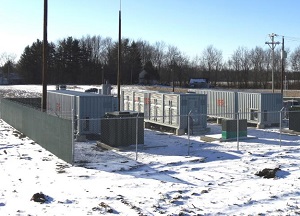 Will they do it before Germany and the United States or even Britain? With a more advanced stance on photovoltaic cells for households, Australia has its priorities set straight. They even want to go toe to toe with Tesla. A company named Redflow - who recently announced their own photovoltaic cell -says their batteries could one day power entire towns becoming the main supply of energy and leaving the utility grid as a backup.
Will they do it before Germany and the United States or even Britain? With a more advanced stance on photovoltaic cells for households, Australia has its priorities set straight. They even want to go toe to toe with Tesla. A company named Redflow - who recently announced their own photovoltaic cell -says their batteries could one day power entire towns becoming the main supply of energy and leaving the utility grid as a backup.
What is apparent is, lithium is here to stay for now. Whilst other engineers and scientists try and work on the next battery breakthrough, lithium is in charge. This according to industry experts who are reassuring the market that lithium-ion isn't going anywhere soon and should be considered the norm...for now.
"It's just going to be incredibly difficult for other battery technologies to catch up with it. I think that's the lessons that a lot of new battery technologies are learning--definitely," said Kevin Gallagher, an electrochemical engineer from the University of Chicago.
From Elon Musk's Tesla range of cars to the smartphones we use today, to the cars we drive, it's all about lithium. "Here you have an economically viable case to not only have solar but to include batteries to make it something you can rely upon. This is pretty revolutionary, particular when you think about this is lithium-ion batteries. It's not exactly the same but pretty darn close to what's in your cell phone," Gallagher said. "Never underestimate an established technology that's already on a learning curve. I think that's the lesson to take away."
- Details
- Written by: Quintus Potgieter
Coal continues to be a useful resource for reasons unrelated to burning it for fuel and energy. Honeywell, an engineering conglomerate from the United States has updated their manufacturing toolsets to include producing materials that convert methanol from coal to plastic. This, allegedly, would mean China could potentially meet the demand for plastics.
The technology is called Advanced Methanol-to-Olefins (MTO) technology. It involves using coal and natural gases to create ethylene and propylene that we see in many of the plastics we use today. Honeywell opened a new facility that would facilitate the technology just outside of Shanghai.
"Using these feedstocks [the converted coal] in the most cost-effective way requires innovative proven technology," said Honeywell.
The process of converting coal to ethylene and propylene is a two-step process.Honeywell details it in a video you can see below.
- Coal or natural gas to methanol
- Methanol to olefins using the MTO technology, which can be made into plastics
"MTO is an innovative, proven technology that enables countries such as China that are rich in coal, but which have had to import petroleum, to make plastics. Honeywell UOP has licensed eight MTO units in China in just the last three years, and this new facility will allow us for the first time to fully manufacture MTO catalysts in China for our Chinese customers," said Rajeev Gautam, president and CEO of Honeywell's Performance Materials and Technologies business group.
The process has only been around since 2013 and is becoming more famous due to a global demand for ethylene and propylene. According to Honeywell, the demand grows by 4 to 5 percent every year. China will allegedly pump $100 billion in coal-to-chemicals by 2020. Honeywell has also assured the public that they use local raw materials, support the local community and "incorporate zero-discharge wastewater treatment. "
- Details
- Written by: Quintus Potgieter
Ed Rensi, a former CEO of Mcdonalds has revealed that the company could be cutting humans completely out of the picture very soon. This, whilst protests to push the minimum wage to $15 an hour grow stronger.
Rensi who was a guest on a show on Fox Business, said: "I was at the National Restaurant Show yesterday and if you look at the robotic devices that are coming into the restaurant industry -- it's cheaper to buy a $35,000 robotic arm than it is to hire an employee who's inefficient making $15 an hour bagging French fries -- it's nonsense and it's very destructive and it's inflationary and it's going to cause a job loss across [the United States] like you're not going to believe."
That is sure to enrage the McDonalds employees who are currently fighting to stay relevant to the company. However, as harsh as the words from the former CEO are, they are undeniably true.
The restaurant industry is integrating into Industrie 4.0 more than people realise. It's all about mobile in the restaurant industry, says founder and CEO of VMob, Scott Bradley. "For us, it's mobile and using mobile apps and mobile engagement effectively. It really requires an understanding of the customer, so using customer data to personalize that mobile experience is really the key to success. Mobile attraction and mobile engagement." Humans want instant, streamlined food production, and robots can do that more efficiently than humans can, as was apparent at the convention.
At the event, there was also a robot that prepared salads without the need for human intervention. Alongside that, a 3D printer that printed confectionery items and a robot that did a collection of pan-frying and deep-frying.
- Details
- Written by: Quintus Potgieter
Who is teaming up with the British government to test out the first energy storage systems that will assist the grid? Renewable Energy Systems (RES) will be working with the UK's National Grid and is expecting that it will be "fully operational" in 18 months. RES will balance the grid by supplying renewable energy in literal seconds, meaning this would be the first real picture of grid balancing, at least for the UK.
"This is the first time that battery storage will be used to provide such fast-acting frequency response service to the National Transmission Network in Great Britain. This innovating technology will enable us to respond to frequency issues in under a second, helping to maintain the integrity of the grid," said Adam Sims, Senior Account Manager at National Grid.

The company has already assisted with frequency services to Canada and the U.S. and now Britain is getting a helping hand in hopes that they might be able to move away from fossil fuel energy production. The U.K. National Infrastructure Commission (NIC) has published a report that claims that if Britain embraces clean energy they could save £8 billion.
We reported earlier in May that whisperings in the energy storage world indicated that Britain would 'quietly' become the leader in solar due to a £10 billion injection. So injecting 10 and saving 8. If the numbers are to be believed, there is a lot of efficiency coming to the British public in terms of energy storage.
RES will be supplying 20MW to the grid in less than a second. John Prendergast, energy storage manager at RES said: "Energy storage can play a large role in supporting the UK's transition to a secure, low carbon, low-cost energy system. We believe that this contract will play an important role in demonstrating this and will encourage policy makers and regulators to accelerate the removal of barriers to wider deployment of energy storage in the UK."
- Details
- Written by: Quintus Potgieter
It seems this year (2016) is the year that biomedical engineers will show off the most. It's almost June and we've seen dozens of amazing new technologies being developed in the biomedical industry that pertain to wearable technology. The latest piece of gear that could be improving our lives is a device that would listen to the cracks in our knees. A Professor Omer Inan, who graduated from Stanford University and is now at the Georgia Institue of Technology has invented a device that uses sound sensors to listen to the sound of joints rubbing together. This would have benefits for doctors in terms of diagnosing the problems with a knee without having to x-ray as the first resort.
The following video will play an amplified sound of a patient's knee which might make you wince. You've been warned.
Omer Inan - from the School of Electrical and Computer Engineering at Georgia Tech- says: "We use piezoelectric film microphones and these are contact microphones, they don't measure sound and air, but they measure the vibrations of the surface of the skin." The data that is measured into a computer displays similar traits to an EKG scan, and thereby the engineers and scientists would be able to determine the health of a knee.
The benefit of this sensory device will also lead to a future of tracking the progress of how an injured knee repairs itself. The device was funded through the Defense Advanced Research Projects Agency (DARPA) who were asking engineers to submit proposals for wearable technologies. DARPA is hoping that the devices will also assist soldiers in the military who have "repeat battlefield knee injuries." "What most people don't know is that musculoskeletal injuries of the knees and ankles are among the top reasons for discharge for active duty service members," said Inan. He also sees a future where it would help with athletes and elderly patients.
The researchers have published their findings in the IEEE Xplore Library under the title, Novel Methods for Sensing Acoustical Emissions from the Knee for Wearable Joint Health Assessment.
The good thing about the human body is that the right and the left knees have similar acoustic measurements. Thank goodness. Otherwise, the engineers might have had their work cut out for them. They say in the abstract of their journal:
Conclusion: We reccommend using air microphones for wearable joint sound sensing; for practical implementation of contact microphones in a wearable device, interface noise must be reduced. Importantly, we show, that airborne signals can be measured consistently and that healthy left and right knees often produce a similar pattern in acoustic emissions.
- Details
- Written by: Quintus Potgieter
The Ivanpah Solar Power Facility is the world's largest solar plant. It is stationed in the Mojave Desert in California, United States and generates 377 MW of clean solar power that powers up to 140,000 homes in the area. It has 173,500 heliostats that have two mirrors each. It is relatively new, it was opened in 2014, and for the first time has unfortunately caught on fire. The fire was purportedly caused by "misaligned mirrors" which the plant uses to reflect the sun into a boiler tower instead of utilizing photovoltaic solar cells.
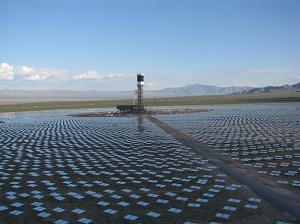 The Associated Press reported that poorly-aimed heliostats "focused the sun's energy about two-thirds of the way up the tower instead of at the boiler at the top of the tower." Electrical cables caught on fire as a result and damaged water pipes within the tower. The tower is since non-operational and there is no clear picture of when the tower will be back online. Another tower is down for maintenance, leaving only one tower operational at the facility.
The Associated Press reported that poorly-aimed heliostats "focused the sun's energy about two-thirds of the way up the tower instead of at the boiler at the top of the tower." Electrical cables caught on fire as a result and damaged water pipes within the tower. The tower is since non-operational and there is no clear picture of when the tower will be back online. Another tower is down for maintenance, leaving only one tower operational at the facility.
Talking to WIRED, Adam Schultz, a program manager at the UC David energy Institute, said: "Ivanpah has been such a mess. If the fire knocks them offline, it's going to further dig them in." He is, of course, referring to the pressure on Ivanpah to meet its targets for energy production, which it hasn't been doing.
The California Public Utility Commission has been warning the facility that they have not hit the targets that were set out for them. However, there is a petition making the rounds that will fight for the plant to continue to produce solar energy to the utility. The tower down for maintenance and the tower that caught fire was an unexpected hurdle in their plans, but they will continue to petition to retain their contact with the Public Utility Commission.
Further complaints about the plant have ranged from the amount of birds that are being killed as a result of the mirrors and there have been complaints from pilots that say they are blinded by the reflections of the mirrors.
The Ivanpah Solar Power Facility is run through a collaborative effort between NRG, BrightSource, and Google (Alphabet). CleanTechnica spoke to David Knox, an NRG spokesman. He spoke of the engineering difficulties the plant has been experiencing. He said:
"We encountered the kinds of engineering problems that can really only be seen and solved in a first full-scale deployment. And in that first year, an inordinate number of partly cloudy days impacted not only the energy output, but also the plant's ability to commission and actually fine tune all of its control systems. But now we that we have leatrned the lessons that we have learned, and the industry has learned the lessons that we have learned; others don't have to. But the first large-scale installation needed to go through those steps."
Thankfully, the fire was put out in 20 minutes by the crew present on the day of the fire and nothing was burned down. More news as this story develops.
- Details
- Written by: Quintus Potgieter
India has successfully launched its first mini space shuttle. The shuttle is known as the Reusable Launch Vehicle - Technology Demonstrator (RLV-TD) which is an unmanned vehicle that the Indian space Research Organization (ISRO) successfully ascended to 41 miles after it had separated from the rocket. It is a winged body vehicle enabled it to make its way back to earth and attempted a runway landing. The virtual runway was a once off runway specifically cordoned off for the landing. One wonders whether the landing was as graceful as SpaceX's recent barge landings, nonetheless, it looks like Elon Musk might have some competition in the reusable rocket industry.
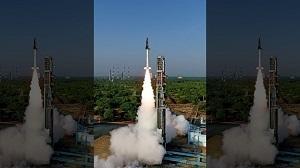
The re-usable vehicle was built by the Vikram Sarabhai Space Center by a team of 600 engineers in a space of five years and has finally launched. The Prime Minister, Narendra Modi, congratulated them by tweeting: "Launch of India's first indigenous space shuttle RLV-TD is the result of the industrious efforts of our scientists. Congrats to them."
America has abandoned their space shuttle programs, but it seems India is just getting started. In a statement, the ISRO said: "In this flight, critical technologies such as autonomous navigation, guidance & control, reusable thermal protection system and re-entry mission management have been successfully validated." The operation took 13 minutes to complete, showing that India's aerospace engineers are more than capable to launch small-scale rockets and space shuttles.
David Wireman, an aerospace specialist at consultancy AlixPartners, told Bloomberg: "While India's effort is behind the likes of SpaceX and Blue Origin, there are still others further behind and all of the solutions remain to be proven, both technically and from a cost perspective. Although the technical hurdles are quite high, it's reasonable to believe India can be successful."
- Details
- Written by: Quintus Potgieter
The Hannover Fair 2016 was quite the occasion, as we've reported before, but it seems like a distant memory. We saw industrial automation take the centre stage at the event, however, there were other engineering feats that weren't reported on as much. One eye-catching innovation was from a company called Sorama which concerns itself with visualising sound and vibrations. They have built something that looks like you should be barbecuing on it, but it is the latest, top-of-the-line product that uses cameras and microphones to measure the sound pollution that cars are emitting on the road today.
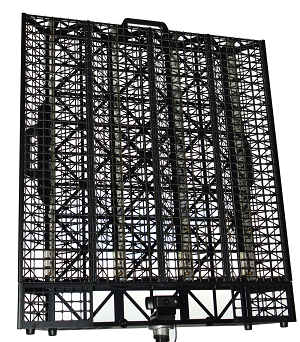
Their engineering technology has assisted other companies in reducing the sound pollution an object makes. They worked with ResQTec to create rescue and recovery tools that are the quietest on the market. An employee for ResQTec spoke said: "Communication between rescue services and the victim should not interfere. Also, high-stress levels should be avoided. The Sorama cameras show noise pollution as a heat signature on their cameras so that designers can attempt to reduce sound once the camera has shown how much of it is emitting on a particular product.
Noise pollution can cause health problems in humans, that is why it is imperative that engineers design products - which include cars, buses, anything in transit - that do not emit enough noise to elevate stress levels or damage hearing.
The new camera they showed off at Hannover Fair is called the CAM1K. The camera is 10.8 pounds in weight of which the microphones are 80% of the weight. That is because there are 64 microphones connected to the device and they have an even bigger CAM with 1,024 microphones attached to it. The microphones can also be found in smartphones, but here they are used to map sound and display it as if it were a heat signature (see the video below).
Sorama's Rick Sholter said: "We've developed sound cameras to tackle noise pollution. You can use the cameras to detect riots on the streets - so that's observation of a large street in a smart city environment. But noise pollution is much more than that: cars driving in the streets make a lot of noise, and your central heating system makes noise, which is all bad for your health."
Sorama says their potential to infiltrate the market is growing. Philips Electronic, Bosch and truck designers have asked them for the expertise in noise pollution measuring so that the future engineering designers are quieter and safer for the mass market to consume. Quieter vehicles mean less noise pollution and less stress on the highways and freeways of the world and would ensure that there is minimal noise for neighbouring areas that live close to them.
- Details
- Written by: Quintus Potgieter
Wearable technology is slowly making its way into the world of today thanks to the engineers in the research and development centers all around the world. Engineers at the University of California San Diego are now announcing that they have the world's first, flexible, wearable device that can monitor "both biochemical and electric signals" that the human body emits. They're calling it the Chem-Phys patch and it records EKG (electrocardiogram) heart signals and other biochemicals the body emits when doing physical activity. The device can be worn in the center of the chest and connects wirelessly to a source that extracts the data (smartphone, smartwatch, laptop).
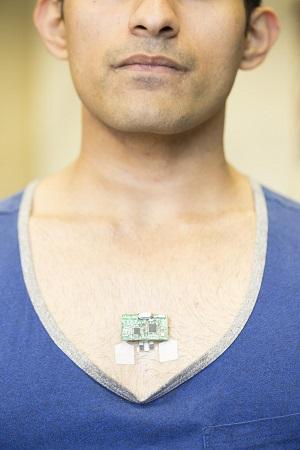
The study of wearable technology is growing at such a rate that UC San Diego has their very own Center for Wearable Sensors where their nanoengineers and electrical engineers do all the work. The engineers say the device they have built will have many uses from monitoring physical activity to measuring data on a patient who has heart disease.
"One of the overarching goals of our research is to build a wearable tricorder-like device that can measure simultaneously a whole suite of chemical, physical and electrophysiological signals continuously throughout the day," said Patrick Mercier, an electrical engineering professor at UC San Diego.
A tricorder being a fictional hand-held device used in Star Trek that would scan a person's body and do a data analysis, eventually spitting out what would be physically wrong with a character in the form of a medical diagnosis. If you didn't know these engineers were nerds before, you surely know now.
Dr. Kevin Patrick, a physician and director of the Centre for Wireless and Population Health Systems at UC San Diego has been watching the engineers at work and thinks the tricorder-like device could be super beneficial to the sports world. He said: "The ability to sense both EKG and lactate in a small wearable sensor could provide benefits in a variety of areas. There would certainly be interest in the sports medicine community about how this type of sensing could help optimize training regimens for elite athletes."
The next step for the engineers could be to try and take the device to the Qualcomm Tricorder X Prize competition that was set up for the sole purpose of actually trying to build a tricorder as seen on Star Trek. The competition will wrap up in 2017 and the prize money will be $10 million. However, it seems as if the competition has already found its finalists.
Source: Eureka Alert
- Details
- Written by: Quintus Potgieter
What is the next ultra-strong building material the world is going to use in its structures? You've been using it since you were a child, it's been under your nose the entire time. Sand. The stuff sand castles are made out of. However, whenever you've made a sand castle it's usually ended a crumbling mess even if you built it well. This is where geotechnical engineering comes in. The aim is to make regular sand/dirt a stronger material so that we could eventually sturdy structures on the inexpensive ground we stand on. We already use some of the technology in highway projects in our world today. But there could be a fruitful future in mechanically stabilized earth.

A YouTube channel called Practical Engineering has shown how this is possible. They foresee a future where instead of the molecular bonds that steel and concrete require (which produces fossil fuels in its creation), sand is could be an all natural alternative. But how do we strengthen something so 'fluid' as the sand that immediately falls away when we scoop a handful of it up from the beach? Practical Engineering points out that when a force is applied to soil, the sliding planes are infinite and therefore something cannot stand on it without making the soil's rigidness fail.
Reinforcing elements are the answer. Sand requires more reinforcing elements because it cannot stand up vertically with causing a slope. Concrete can stand at a vertical face due to the mechanical stabilizing that the engineers have secured within it or around it. So the YouTube channel explains that flat pieces of fabric are layered between the soil which creates a reinforcement and strengthens the sand. This in a real life example would obviously translate to a sturdier soil reinforcement method with sturdier materials. They show that MSE (mechanically stabilized earth) walls are used in highway projects and then covered up with patterned walls that are quite nice to look at but are always an example of soil that has been stabilized with reinforcements and are actually super-sturdy pieces of engineering. 
Steel reinforcements - that can be layered in between soil - are utilized in the civil engineering world today, but the future of a cost-effective fabric that could be layered between soil could be the future of reinforced soil. The current issue with using steel reinforcement is that corrosion can occur, however, the patterned panels can preserve some of the corrosion that would occur due to wind and water, however, most engineers point out that the panels are basically just for decoration. However, some galvanized steel reinforcement blankets can last up to seventy-five years according to industry insiders, and that can be layered in between soil to mechanically reinforce it.
Do give the video a watch, they balance a car on a cube of reinforced soil to show how sturdy it can actually be.
- Details
- Written by: Quintus Potgieter
What software do you use to make incredible, engaging engineering designs? Are the products you're designing ready to connect to the Internet of Things? Autodesk Fusion 360 looks to be a mechanical engineer's dream software and they have now updated it to include something they call Fusion Lifecycle and Fusion Connect. Yes, Autodesk is embracing the Internet of Things, which was quite apparent since they bought out a company called SeeControl that specialized in cloud-hosting and IoT. Now, thanks to technologies from SeeControl, Autodesk now gives engineers the freedom to design whilst their program analyses and manages performance data for you.
"Both Autodesk Fusion Lifecycle and Fusion Connect are existing products, but they're now dramatically enhanced. Fusion Connect captures, analyzes, and manages performance data, so you can improve your design. It monitors products remotely. It can even push out new features over the internet. The fundamental mission for Fusion Connect is to identify failures before they occur," said Ron Locklin, Autodesk's director of business development for Fusion Lifecycle.
Thanks to their new Fusion Connect platform, engineers can create IoT infrastructures and see how the products would behave in those sorts of connected networks. This could be invaluable for industrial complexes that are moving towards the Internet of Things but need an example of how their machinery would work alongside it.
The software utilizes the Industrial Internet of Things and can produce the data the engineers need so that an industrial process can be refined to the point that it improves the product that is being made. It will also connect smartphones to the software so that the engineers and bigwigs of a company can keep an eye on production rates and data that pertains to how efficient a factory is working.
Autodesk's Fusion platform claims it can do more than just IIoT work, it can also deal with industrial additive manufacturing (3D printing) designs as well. They are certain their cloud-based, non-hardware solution will ensure that products get designed and manufactured much quicker.
Autodesk also wants to encourage engineers to design products that can connect to the Internet of Things and they have eight tips on how to achieve that goal:
- Identify IoT value: Determining what information customers will value in an innovation.
- Build product model: How the product creates value.
- Build product app: An app that monitors and interrogates built models and accesses the real time analytics. System data must be available. Point & click approach to making IoT analytics easy for anyone to read.
- Set up analytics: Real-time analytics (rules engines that make decisions in the present), predictive analytics (what a product may do in the future and how efficient it may be), descriptive analytics (makes sense of the past) and prescriptive analytics (based on a rule, how would the product react).
- Choose networking equipment: After choosing the sensors the industrial machines will work on, the network fabric is decided on. Operational Technology Network: Connects the sensors within the product. Then the Information Technology Network connects the OT network to the product-cloud so that the analytics can be presented to anyone who would like to see them.
- Connect network and product cloud with backhaul connection: WiFi/4G connections to ensure the sensors and products talk to each other and upload their data to the cloud.
- Security & privacy: Saving the system from external hackers or internal factors.
- Connect external systems: Standalone third party analytics measuring systems could be possibly be installed so that a company doesn't need to make sense of the analytics themselves, a third party can tell them what is happening with their machines and how to improve them.
Autodesk says that their Fusion products are perfect design tools to perfect all of the above-mentioned guidelines on how to create a product that is fit and ready for the Internet of Things. However, whether the cloud-based software is used or a different program is used, once a product has been designed, then manufactured, the only logical way forward in the world of today is to get it to connect to the Internet of Things.
- Details
- Written by: Quintus Potgieter
China has just about completed the world's largest radio telescope named the Five-hundred-meter Aperture Spherical Telescope (FAST). The telescope has been built by the National Astronomical Observatories of the Chinese Academy of Sciences (NOAC) with the assistance of Australian CSIRO engineering. Don't question the rationale behind building it, because you will end up listening to a conspiracy theory of how this dish might actually lead to a conversation with an alien race. However, it is a serious effort into finding radio signals within galaxies and investigating dark matter. Essentially, China is looking for radio signals buried far out into the stretches of the universe a radio signal has never reached before. The telescope cost $184 million and is positioned in China's Guizhou Province. There is one snag that is delaying the launch of the telescope. China confirmed to the Xinhau News Agency that it first needs to relocate up to 9,000 people before the telescope can be operational in the area. As a result, an electromagnetic wave environment will descend on the land without any chances of people getting in the way.

Dr. Larry Marshall, Chief Executive of CSIRO told PHYS: "Global collaboration is an integral part of CSIRO's Strategy 2020, as it maps out our desire to deliver science, technology, and innovation to new customers and markets while also delivering benefit back to Australia. This is a really exciting project and builds on 40 years of CSIRO collaboration with Chinese industry and research organizations."
The telescope - which stands at 30 soccer fields in length - will be able to outperform current telescopes by seeing several simultaneous beams as it measures for distant and hidden galaxies. Acting director of CSIRO's Astronomy and Space Science wing, Dr. Douglas Beck, said: "The powerful receiver we've created for FAST is the result of our long history developing cutting-edge astronomy technology to receive and amplify radio waves from space. Extending our technology and collaboration to China and working on what will become the world's largest radio telescope really cements our position as a global R&D leader in this space."
They expect to have FAST fully operational by September, 2016. To see the progress that had been made as of January, check the video below:
- Details
- Written by: Quintus Potgieter
Mechanical engineering and biomedical engineering are furthering their bosom-buddy status through a world first testing of HER technology. It means Haptically-Enabled Robots and Australia's Deakin University could be bringing them to the world with Telstra quite soon. The robots would be able to conduct ultrasound imaging diagnoses to remote locations where medical help is few and far between. The robots come out of the Deakin University's Institute for Intelligent System Research and Innovation, and will be connected through a 4G wireless network by the help of Telstra.

The 4G wireless network will also allow a doctor to be sitting 620+ miles away whilst they control the robot and use the technology on a patient that is in another part of the country. The institute's director, Professor Saeid Nahavandi said the partnership would result in a world-first application of the HER technology that had previously been a pipe dream for some companies to achieve. He said: "Our aim is to develop advanced haptic, or force feedback, and stereovision capability for remote ultrasound procedures. It will increase the availability of ultrasound for regional patients, which is incredibly important, but it will also minimise potential errors, saving time that might be spent having the patient rescanned or transported to a regional hub."
Telstra needs to ensure that the network will be operational twenty-four-seven if this kind of technology is to work on 4G networks. "We're certainly not looking to lock up this technology just for domestic use, we think it has global applicability and certainly we will work with some of our international partners to see how we can license and deploy this for the greater good of the world," said Vish Nandlall, Telstra's chief technology officer. "This can help in improving patient outcomes at the end of the day because we're basically allowing skilled operators to get access to those remote patients without having to travel to those remote locations."
The haptic feedback on the doctor's side will allow them to physically feel what the robot is doing under their command from hundreds of miles away.
Source: ZDNet
- Details
- Written by: Quintus Potgieter
Engineers at the University of South Wales have just set a new world efficiency record for solar cells. It's allegedly all about the solar cell configuration that allows sunlight-to-electricity conversion efficiency to be pushed up to 34.5%. Dr. Mark Keevers and Professor Martin Green work inside the UNSW Australian Centre for Advanced Photovoltaics and have configured the solar cells in such a way that when sunlight hits it, it splits sunrays into four bands that manage to extract more electricity from them.
The United States National Renewable Energy Laboratory confirmed that the system is 44% more efficient than the last record.
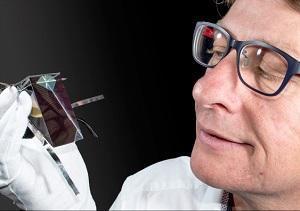
"This encouraging result shows that there are still advances to come in photovoltaics research to make solar cells even more efficient. Extracting more energy from every beam of sunlight is critical to reducing the cost of electricity generated by solar cells as it lowers the investment needed, and delivering payback faster," said Keevers.
UNSW says that the system devised by Keevers and Green using no concentrators and uses pure sunlight, whereas the last record was set by concentrator photovoltaics that utilizes mirrors that concentrate the light.
"What's remarkable is that this level of efficiency has not been expected for many years. A recent study by Germany's Agora Energiewende think-tank set an aggressive target of 35% efficiency by 2050 for a module that uses unconcentrated sunglight, such as the standard ones on family homes," said Green.
The good news is that solar cell efficiency is moving faster than expected, however, Green cautions that photovoltaic research must continue in Australia so that the country can also benefit from the engineering marvels they create. Australia has been progressing past many countries in being the first to subsidize photovoltaic cells for home use in some of its suburbs. The Clean Energy Council has also been very advanced in its setting of guidelines for installers in Australia. Now, with added efficiency, renewable energy is progressing quicker than previously thought. Additionally, the Australian Renewable Energy Agency has been funding solar concentration methods of photovoltaic cells. Recent reports on funding have indicated $1.4 million has already been funded.
Source: UNSW Australia News Room
- Details
- Written by: Quintus Potgieter
China wants to be in charge of building service robots if the latest bid for a robotics company is any indication. A Chinese group named Midea Group has just put in their bid for Germany's Kuka Robotics. Their offer to the company is around $5 billion, which should show the seriousness of the market of service robotics. Kuka's current focus is how robotics will factor into the Internet of Things and assist the expansion of Industrie 4.0.
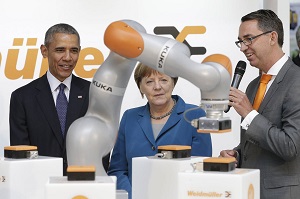
An automated welding robot is what one of their recent videos has shown off, a robot they also displayed at the Hannover Fair 2016. China, already synonymous for their robotic pioneering, will cement themselves as the number one importer of robotics if their deal for Kuka goes through. The International Federation of Robotics has reported that China currently utilizes 36 robots to every 10,000 humans. They lag behind the United States, who has 164 robots per 10,000 humans, who then lag behind South Korea who have 478 robots per 10,000 humans. The group also report that industrial robot sales have jumped up by 8% in 2015, with the greatest demand being in the automotive industry.
Midea Group says that they are not interested in a full takeover, which might bode well for some engineers working in the background at Kuka AG. It looks like their expertise is being chased here, but their $3 billion a year business might also be an attractive draw card. Nonetheless, experts are saying that Midea's purchase of Kuka could put them in the driver's seat of industrial automation in the world.
The Wall Street Journal has released the figures, showing how many Chinese companies have exacted takeovers of international companies. The results are staggering:
| Date announced | Target | Country | Industry | Acquirer | Deal value excluding debt, in billions |
| Feb 3 | Syngenta | Switzerland | Agribusiness | ChemChina | $44.1 billion |
| Feb 17 | Ingram Micro | United States | Technology | Tianjin Tianhai Investment Development | $6.1 billion |
| Jan 15 | General Electric | United States | Consumer Products | Qingdao Haier | $5.4 billion |
| May 18 | Kuka | Germany | Robotics | Midea Group | $5 billion + |
| Jan 12 | Legendary Entertainment | United States | Leisure and recreation | Dalian Wanda Group | $3.5 billion |
The biggest Chinese takeover of a company this year is ChemChina's mammoth $44.1 billion takeover of Syngenta in agribusiness, however, the biggest robotics takeover is Kuka's purchase by Midea Group. It should be interesting to see what kind of industrial robotic technologies come out of the deal but some analysts believe that Midea Group might want to venture into the home-robot industry for consumers to purchase. Time will tell.
- Details
- Written by: Quintus Potgieter
Wearable technology is the current trend that has led to a plethora of engineers that are investing their time into creating incredible innovations. Building batteries for devices that can be worn on a body is a challenge due to the need for a battery that powers wearables without being clunky and getting in the way. Smart watches are getting it right to some degree but what if we want truly skin-tight wearables? Researchers have looked into the flexibility of batteries and have come up with something that could revolutionize the field of wearable technology.
At the University of Illinois, in the Department of Materials Science and Engineering, researchers have been working on flexible power systems. They have published their findings in the Proceedings of the National Academy of Sciences under the title Soft, thin skin-mounted power management systems and their use in wireless thermography.
In the abstract of their report, the researchers say the current options for wearables are "incompatible with thin geometries" and aim to change that with their new flexible alternatives. They have created millimeter-scale solid-state batteries, along with solar cells into "electrically interconnected arrays".
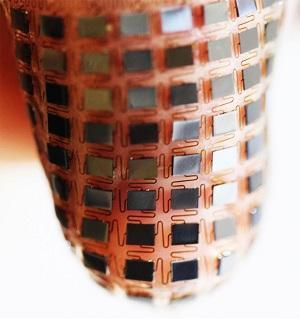
Explaining the electrically interconnected arrays, the engineers in their statement to the press, said: "The components are electronically connected via flexible copper-polymer interconnects, mounted on a highly elastic silicone core, and enclosed within a silicone shell. The resulting system could stretch up to 30% without detectable loss in solar power generation."
At the helm of the project is Professor John Rogers, at the Department of Materials Science and Engineering at the University of Illinois. He said: "If you think about conventional electrical devices they are all rigid as a consequence of the fact they are all formed on wafers of silicon. The question is how do you get from that to something that looks like the skin that matches the shape of the physical body."
The researchers then came up with the interconnected arrays that are connected through what they called 'spring-like wiring'. The result is something that can be worn and is stretchy enough to fit over a surface and then tightens up like a piece of clothing.
The research will be invaluable to the wearables industry as technology further integrates with humans and their bodies.
- Details
- Written by: Quintus Potgieter
Germany. May 8th, 2016. Renewable energy in the country was utilized more than it had ever been utilized in the past. The country almost operated completely on renewable energy and left fossil fuels wondering what had happened. According to Bloomberg, at 2 p.m. on Sunday renewable energy sources supplied 45.5 gigawatts of the 45.8 gigawatts that were being demanded.
"Events like this highlight that eventually we may need to start curtailing because of market-wide oversupply. In the long-run, that may provide a case to build technologies that can manage this oversupply -- for example more interconnectors or energy storage," said Monne Depreaetere, an analyst at Bloomberg.
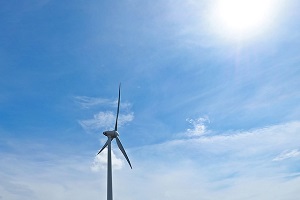 The contributing factor, that cannot be reproduced at the drop of a hat, unfortunately, was weather conditions. There was a lot of wind on Sunday and that send wind turbines a-spinning. Germany is, however, currently getting a third of its energy from renewable energy sources. Additionally, solar, hydro and biomass plants factored into the amount of renewable energy that was supplying the country with energy for a few hours. At 2 p.m. the cost of energy was in the negative numbers in Germany, which means Germans were making money by using electricity.
The contributing factor, that cannot be reproduced at the drop of a hat, unfortunately, was weather conditions. There was a lot of wind on Sunday and that send wind turbines a-spinning. Germany is, however, currently getting a third of its energy from renewable energy sources. Additionally, solar, hydro and biomass plants factored into the amount of renewable energy that was supplying the country with energy for a few hours. At 2 p.m. the cost of energy was in the negative numbers in Germany, which means Germans were making money by using electricity.
Germany is focusing on 100% renewable energy by 2050, pushing forward and hoping to achieve most of the goals by 2030, which some critics have their doubts about.
And then out of nowhere, Portugal joined the party as well. They ran on competely renewable energy for four consecutive days. They ran from Saturday, 7 May to Wednesday, 11 May. Portugal has put a lot of funding behind solar energy to ensure that these sorts of feats of engineering are possible.
- Details
- Written by: Quintus Potgieter
Regenerative braking is the winner in the energy storage world, the competition is over, lithium-ion has been destroyed - is a statement you're not going to hear anytime soon. Nonetheless, it is a new energy storage alternative that could assist utilities when they need more energy to continually power the grid. Regenerative braking is a method of taking kinetic energy from moving parts and then storing that energy and reusing it. Electric vehicles have been using the method and trains have as well. As a train applies its brakes, a battery captures the kinetic energy.
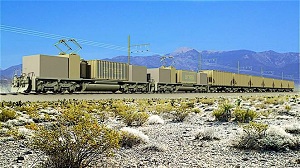
Now, a company named ARES (Advanced Rail Energy Storage) is taking this technology more seriously and championing a new project in California. The company says their grid-scale energy management system is capable of providing utility balance when it is needed.
The way it works is through the use of 300-tonne train-like vehicles on a train track that will be self-driving. When a power utility is in need of power, the vehicles - who would have made their way uphill when the utility had an excess of power - will travel downhill. Their motors then become energy generators and generate electricity in the act of travelling downhill and then braking. The cabs have rocks in them so that they are weighted down and faster when coming downhill.
The engineers say the system life on these vehicles is 40 years or more and can produce 12.5 megawatt-hours of energy. ARES confirms that by 2019 they will be operating over 106 acres of land in Pahrump, Nevada. The project would end up costing $50 million +. However, whether this becomes the most sustainable way to ensure everyone in the world can look forward to cheaper, cleaner energy remains to be seen. For now, funding is even going in to regenerative braking to see if we can solve the energy trilemma.
ARES Chief Executive, Jean Kelly, said: "ARES Nevada will be a world-class facility and a point of pride for Nevada. The power production is clean and renewable - operating of the project requires no water or fossil fuel and creates no hazardous waste or emissions."
- Details
- Written by: Quintus Potgieter
Shell has had a busy week which started on Thursday last week. First of all, the company went to work to try and plug a fault in a flowline that sent 2,000 barrels (approximately 90,000 gallons) of oil leaking into the Gulf of Mexico. The oil slick the leak has caused is reminiscent of the Deepwater Horizon Spill of 2010
 The Associated Press put the figures together and concluded that there have been 147 spills and 500,000 gallons spilled into the Gulf of Mexico since 2012. Shell claim to have wrapped up the cleaning effort, according to a statement. Shell said, "The joint response mobilized more than 150 people, five on-water recovery vessels for skimming, and aerial assets to respond to the sheen...There have been no reported impacts to the coastline or the fisheries."
The Associated Press put the figures together and concluded that there have been 147 spills and 500,000 gallons spilled into the Gulf of Mexico since 2012. Shell claim to have wrapped up the cleaning effort, according to a statement. Shell said, "The joint response mobilized more than 150 people, five on-water recovery vessels for skimming, and aerial assets to respond to the sheen...There have been no reported impacts to the coastline or the fisheries."
This once again catches the attention of opinion makers around the world and emphasizes the need for a moving away from fossil fuels due to the environmental threat substances such as oil are.
Vicky Wyatt, a Greenpeace campaigner, spoke to the Guardian, saying: "The last thing the Gulf of Mexico needs is another oil spill. The oil and gas industry's business-as-usual mentality devastates communities, the environment, and our climate. Make no mistake, the more fossil fuel infrastructure we have, the more spills and leaks we'll see. It's past time to keep it in the ground for good."
To appease some of their critics, Shell has launched a new division named New Energies that will focus on renewable energy. The new division will see Shell using some energy applications they have been unfamiliar with in the past, such as wind power. The company has not formally confirmed that they have launched the division, however, insiders are saying it has $1.7 billion funding and will work alongside the Integrated Gas Division within the company.
The move comes after Total opened their very own renewable energies division within their company in an attempt to show the world that the calls for companies to move away from fossil fuels are being heard.
- Details
- Written by: Quintus Potgieter
Former engineers from Google, Tesla, Apple and Cruise Automation have jumpstarted a new company that will specialize in self-driving trucks called Otto. Engineers who worked on Google's self-driving car have joined hands to create hardware kits that can be installed on pre-existing trucks or can be built into trucks at the manufacturing phase. They are currently using a Volvo VNL 780 truck as a test subject but say they will be trying Class 8 trucks. They say there are 4.3 million commercial trucks in America as it is.
This doesn't mean truck drivers are being cut out of the equation, not by any means. The truck drivers will be able to override the 'auto-pilot' and navigate loading and unloading as they would in the past. The one thing the truck might do for them, however, is navigate the highways autonomously. Daimler and Volvo have also been looking into implementing self-driving technology into their trucks, but based on their promotional video, it seems Otto has it down already. The retrofitting-nature of the Otto truck hardware might just be a big selling point in the market of self-driving trucks. The competition is heating up.
"We intend to enhance the capabilities of the Otto truck, collect safety data to demonstrate its benefits, and bring this technology to every corner of the U.S. highway system," say the founding engineers of the project. The co-founders are Anthony Levandowski and Lion Ron who have worked on the self-driving technology that Google is telling congress they should make mainstream in all states in the United States.
- Details
- Written by: Quintus Potgieter
Engineers at one of the world's leading elevator companies, ThyssenKrupp, have shown off an elevator system dubbed 'TWIN', that would see two elevators on the same shaft. In some countries, the system has been installed and have been working for quite some time, but for others, two elevators on one shaft is unheard of. Four years ago the company released the report that showed the very first elevator system that had two cabs working on one shaft, minimizing time and costs in a company. The tagline for the project is 2 cabs, 1 shaft, 0 crowds.
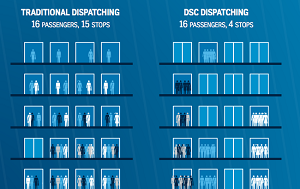 They also say that the traditional elevator systems for 16 passengers, would theoretically make 15 stops, however, with their technology there would be only 4 stops, due to double the number of cabs on one shaft. The company says with fewer stops than a traditional system, there is less energy consumption that occurs. Another energy saver is that if there is not a lot of foot traffic occurring during the day, one out of the two elevators can be parked during off-peak times. The company says with one shaft, the number of construction materials necessary on site will also be lowered. According to TechInsider, the United States will be seeing their first Twin elevators in a building at Georgia Tech in 2018. The number of buildings that currently utilize the Twin system sits at 200, worldwide.
They also say that the traditional elevator systems for 16 passengers, would theoretically make 15 stops, however, with their technology there would be only 4 stops, due to double the number of cabs on one shaft. The company says with fewer stops than a traditional system, there is less energy consumption that occurs. Another energy saver is that if there is not a lot of foot traffic occurring during the day, one out of the two elevators can be parked during off-peak times. The company says with one shaft, the number of construction materials necessary on site will also be lowered. According to TechInsider, the United States will be seeing their first Twin elevators in a building at Georgia Tech in 2018. The number of buildings that currently utilize the Twin system sits at 200, worldwide.
Safety is obviously a huge concern for people, who are afraid of a second elevator cab crashing down into the first one. However, ThyssenKrupp says they have it all handled with a four stage safety system that regulates the minimum distance the two cabs can be from each other.
To see how it all works, check out the promotional video below. You could be riding one of two elevators quite soon.
- Details
- Written by: Quintus Potgieter
Stanford University's engineers are back in the news again for biomedical engineering that would involve using a urine test to determine whether or not a person has a disease or not. Yes, that does sound like the way it has been done for quite some time, however, engineers are trying to revolutionise the testing process and make it as simple as home testing. In the past, almost like the litmus paper test, a paper is dipped into the collected urine sample and the paper changes colour. However, the results of these sorts of tests have been inconclusive, and so the engineers went to work to perfect this problematic way of testing for diseases.
"You think it's easy -- you just dip the stick in urine and look for the color change, but there are things that can go wrong. Doctors don't end up trusting those results as accurate," said Audrey Bowden, an assistant professor of electrical engineering at Stanford.
The engineers have designed a small box that will still utilize a paper with samples on a dipstick but will make use of a smartphone app. The camera notices changes in color and can accurately measure which disease is prevalent on the dipstick.
Is it completely full proof? Is it the legitimate answer to home testing for diseases?
"If you have too little or too much urine on the dipstick, you'll get erroneous results," said Gennifer Smith, a P.h.D student in electrical engineering. This used to be another problem with the dipstick test in the past, however, to circumnavigate the problem, the engineers designed a "multi-layered system to load urine onto the dipstick." Therefore, the dipstick gets the right amount of urine and does not overdose the dipstick.
The engineers hope to release an official app for phones with the box in the future so that people could test themselves at home instead of having to pay costly doctor's fees to go in just for a solitary test. Smith said: "This device can remove the burden in developed countries and in facilities where they don't have the resources to do these tests."
They have published their findings in the journal Lab on a Chip. The report is titled: Robust dipstick urinalysis using a low-cost, micro-volume slipping manifold and mobile phone platform.
Source: Stanford News
- Details
- Written by: Quintus Potgieter
Bendable phones are getting closer and closer to being a reality. There are hurdles, but nothing engineers cannot eventually work around to bring the smartphone market a phone that can bend without breaking and produce 3D images. Queen's University Human Media Lab have played around with this technology and are saying that they have developed the world's first holographic flexible smartphone.
They have nicknamed the phone the HoloFlex. The phone uses tiny lenses, planted onto a 1,920 x 1,080 HD OLED screen which then also shows images in 3D. The engineers explain that is lightfield lens array and OLED touchscreen technology that enabled them to craft a screen that would show 3D images without the need for glasses or head tracking and also bends.
"It has a light field display, preserving the angles of all the light rays in a 3D image through a layer of microlenses," say the engineers in the promotional video. This allegedly allows multiple people looking at one device to see stereoscopic depth images with motion parallax without any glasses. Right now, the images don't look all that impressive and the screen looks clunky to operate due to lagging issues but as the technology progresses it will obviously become just like our smartphones we use today.
Just imagine Skyping or Face-timing someone and their face pops out of your screen in a holographic representation of them.
This is not the first time these specific engineers from Queen's University have played with bendable, holographic materials. They also have a bendable smartphone prototype that is less 3D but is very bendable and can do some interesting stuff. ReFlex is a smartphone the engineers are releasing that is bendable to a point, and can mimic the act of flipping pages in a book with its bendable surface. The engineers, as they did in their holographic example, play Angry Birds to show how the technology would work.
"When this smartphone is bent down on the right, pages flip through the fingers from right to left, just like they would in a book. More extreme bends speed up the page flips. Users can feel the sensation of the page moving through their fingertips via a detailed vibration of the phone."
The phone utilizes a set of bend sensors and a haptic actuator that sends the vibrations to the phone that sends the haptic feedback into the advance so a user knows and understands how they are controlling the phone and what specific movements makes it respond.
"This allows for the most accurate physical simulation of interacting with virtual data possible on a smartphone today," said Roel Vertegaal, the director of the Human Media Lab at Queen's University.
Read the entire report: ReFlex: A Flexible Smartphone with Active Haptic Feedback for Bend Input by clicking
- Details
- Written by: Quintus Potgieter
Molybdenum disulfide (MoS2) is the newest addition to semiconductors in the optoelectronics field. Optoelectronics is the field of engineering that has produced great, useful machinery like X-rays, infrared and more. Now, engineers from the University of Buffalo's School of Engineering and Applied Sciences have discovered a method wherein ultrathin semiconducting materials absorb light at a higher rate. In the abstract to their study, the engineers go a bit more in-depth into what they have been experimenting with. The study's name is MoS2 monolayers on nanocavities: enhancement in light-matter interaction
Two-dimensional (2D) atomic crystals and van der Waals heterostructures constitute an emerging platform for developing new functional ultra-thin electronic and optoelectronic materials for novel energy-efficient devices. However, in most thin-film optical applications, there is a long-existing trade-off between the effectiveness of light-matter interactions and the thickness of semiconductor materials, especially when the materials are scaled down to atom thick dimensions. Consequently, enhancement strategies can introduce significant advances to these atomically thick materials and devices.
Here we demonstrate enhanced absorption and photoluminescence generation from MOS2 monolayers coupled with a planar nanocavity. This nanocavity consists of an alumina nanolayer spacer sandwhiched between monolayer MoS2, increasing the exclusive absorption of monolayer MoS2 to nearly 70& at a wavelength of 450nm.
The nanocavity also modifies the spontaneous emission rate, providing an additional design freedom to control the interaction between light and 2D materials.
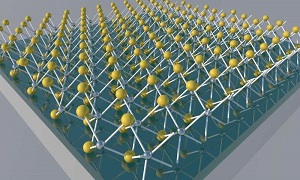
Qiaoqiang Gan, P.h.D, assistant professor of electrical engineering at the University of Buffalo's School of Engineering and Applied Sciences told PHYS: "The nanocavity we have developed has many potential applications. It could potentially be used to create more efficient and flexible solar panels and faster photodetectors for video cameras and other devices. It may even be used to produce hydrogen fuel through water splitting more efficiently."
Ultra-thin solar panels would be most helpful to the future of energy storage that is gaining popularity in the world today. More energy efficient electronic devices could also revolutionize the 'smart' device industry as well.
- Details
- Written by: Quintus Potgieter
Advanced Micro Devices Inc. (AMD) have found the right people to shake hands with to ensure that they continue to produce processors to the engineering industry. Due to this, they saw revenue jump up in the biggest increase in the last 35 years for the company and are reportedly expected to see a 15 percent increase in the second quarter of the year.
The deals made with AMD open a renewed battle for who can create the best x86 processors and system-on-chip technologies. The company linking arms with AMD is THATIC (Tianjin Haigunag Advanced Technology Investment Co. Ltd.). AMD will supply everything THATIC needs to build a server chip that could apply to several markets including the consumer and the enterprise markets, according to Bloomberg.
 Analysts of the computer market are saying this is what needed to happen for AMD to try and keep up with Intel. They are also saying the joint-venture will see intellectual property in the x86 sector finally get funding and introduce new products to the market. Data centers around the world would be running these AMD chipsets by 2017, however, if AMD really wanted to make a dent in the market, they'd start working on system-on-chip technology for self-driving cars.
Analysts of the computer market are saying this is what needed to happen for AMD to try and keep up with Intel. They are also saying the joint-venture will see intellectual property in the x86 sector finally get funding and introduce new products to the market. Data centers around the world would be running these AMD chipsets by 2017, however, if AMD really wanted to make a dent in the market, they'd start working on system-on-chip technology for self-driving cars.
A company named NXP has announced a chip that will act as the "central computing engine" for self-driving cars that will fuse the radar, Lidar and scanning equipment in a self-driving car and ensure those processes work flawlessly. They are calling their solution the Bluebox system. The company said that the chips had made their way to some top carmakers in the industry but have not confirmed which ones.
Kurt Sievers, the executive vice president of NXP's automotive business, said in a statement: "With this industry-first platform, NXP is leveraging its worldwide automotive silicon leadership to dramatically advance the state of autonomous vehicles. Our systems-level expertise, deep understanding of complex ADAS (Autonomous Driving System Architecture) engineering challenges, and broad portfolio of NXP products meeting automotive-grade (ISO 26262-level) functional safety requirements, all position NXP as the definitive silicon provider capable of single-handedly speeding the readiness and availability of self-driving cars tomorrow."
After 30 million ADAS processors sold by NXP, it has made them the largest provider of silicon chip producing in the world today.
- Details
- Written by: Quintus Potgieter
Who is leading the charge in the 3D printing world? The answer may be revealed at the 3D Manufacturing Event hosted by RAPID, the authority on 3D printing, scanning and additive manufacturing on an industrial level.
The keynotes that are going to be delivered on the 16th to the 19th of May, 2016, include:
- Transition to production
- Next generation manufacturing: Leveraging the digital thread
- 4D printing in Medicine: Developing medical devices for the growing patient
- The future of additive manufacturing and 3D printing
The event is expected to see a new piece of software that will reportedly astound the industry. The name of the software is Materialise Magics 3D Print Suit.
The event should clear up some of the details of the industry that manufacturers would like to hear about before they take the plunge and invest money into 3D printers.
To see the software in action, check out the video below:
A company that is trying to capitalize on the 3D printing hobbyist movement is a company named Sculpteo. The company conducted a study to measure the rise of 3D printing hobbyists who are actively looking into casual 3D printing just for the fun of it. What they found was that the most hobbyists are from Europe, a staggering 55% of their responses. In at 40% was North America. The study had 300 respondents. Forty-six percent of the respondents said that they were first-time 3D printing hobbyists whilst the others had already begun delving into the world of 3D printing.
As 3D printing is growing, the concern over intellectual property and copyright have arisen in the engineers who are crafting these printers' minds. Michael Wineberg is from a 3D printing company called Shapeways and they run an industrial 3D printer that takes orders and requests - and then ships the finished product off to customers. He spoke to PBS' Idea Channel and said: "With 3D printing there are lots of objects that are protected by copyright because they are non-functional, creative works but there are also a lot of objects that are functional works that are categorically excluded from copyright protection because they're functional works."
Wineberg refers to engineers when they are printing something that serves a functional purpose. If it's a door hinge, a screw, a cog or something that has a functional purpose it is usually outside of the scope of copyright. But, if you're going to print an Action Man doll, there might be some copyright infringement that occurs.
Therefore, if you are to become one of the enthusiasts buying themselves a 3D printer for hobbyist uses, remember to be mindful about copyright infringement.
- Details
- Written by: Quintus Potgieter
Who said engineering isn't fun?
Students at the Bringham Young University in Utah, have developed an artificially intelligent robot that not only serves as a partner to play games with when you're lonely but can also beat you at foosball. Nathan Warner, a BYU student in computer engineering, said: "So we're building a robotic vision-controlled foosball table. So, the objective is to defeat a human player." The students programmed how a normal human would play the game and then put that into the coding. There is a camera that is set up above the table and watches where the ball is and changes its algorithms based on where the ball is travelling. The students say the robot has started out-thinking them, which is testament to its artificial intelligence learning what it should and should not do when playing foosball.
Joseph Quist, who helped develop the table said: "Our system responds very quickly ; it's faster than humans."
Robots defeating humans at their own games is nothing new. Back in January, Google's artificial intelligence DeepMind showed that it could beat the reigning champion of Go. You can watch all the games on YouTube to see how the A.I. defeated Lee Sedol. The A.I. beat the European champion 5-0, however, once it played Lee Sedol it lost one game, but won the other four.
Then the Japanese built a robot that could play soccer against humans and also showed immense promise when it came to a demo-match. The robots were built by the Beijing Information Science and Technology University and took part in the annual RoboCup, an event where robots go up against humans in small games.
One of the engineers that worked on the soccer-playing robots spoke to The Mirror, saying: "Robots act differently on their own decisions. They move to positions for scoring or defending." The game ended 3-2 to the robots and was one of the first times soccer-playing robots showed such agility, whereas in the past the robots that were put on a field of play where mostly slow and clunky.
It all comes down to artificial intelligence and how that A.I. has been embedded into a robots inner-workings. However, there are a lot of engineers who discourage this work due to the overwhelming results that paint a picture of a robot-job-takeover future. Some opinion makers are scared that soon all sorts of jobs will be overrun and done more efficiently by robots. Some have already met that fate.
For instance, today a law firm named BakerHostetler has just taken on a new employee. An artificially intelligent employee. It is called ROSS and it does the legal work of a "Super Intelligent Attorney." The system utilizes IBM's Watson. Lawyers can now ask insanely complex law questions and then the artificial lawyer will give them an answer based on the ever-growing principles of law. The engineers at the University of Toronto, have said that this 'search-engine of law' of sorts is intended to be used alongside a human team of lawyers.
For more information on how ROSS works, check this video out:
- Details
- Written by: Quintus Potgieter
ITU and Cisco have teamed up to release a sixty-one-page document detailing what needs to happen globally to facilitate the operation of the Internet of Things and how it will develop our world in the future. The report was titled: Harnessing the Internet of Things for Global Development.
Mr. Houlin Zhao, the ITU secretary-general wrote in his foreword to the report:
"The Internet of Things is not a single, unified network of connected devices, but rather a set of different technologies which can be put to work in coordination together at the service and to the ultimate benefit of people in both developed and developing economies. This set of Internet of Things technologies is realizing a vision of a miniaturized, embedded, automated environment of devices communicating constantly and automatically. However, connecting up devices or robots (whether they are bridges, fridges or widgets) is only a means to an end -- the really interesting part arises in terms of what can be done with the data obtained, and the learning outcomes for improving the future."
Cisco outlines three categories of society where IoT has directly changed the way the world does things:
| Level: | Individual | Community | Society |
| IoT |
Smart phones Weareables |
Connected Cars Health Devices Smart Homes |
Smart Cities Smart Grids |
| Examples |
GPS, Fitbits Visa Paywave Mastercard Paypass Employee passes |
Intelligent Transport Systems Event Data Recorders (EDRs) Blood pressure monitors Remote burglar/heating systems |
Smart metering Smart water meters Traffic monitoring |
| Data |
Mobile money Fitness data GPS location-based data |
Speed, distance, airbag, crash locations/alerts Heart rate, blood pressure, diet, remote heating data |
Electricity/water Consumption & billing Traffic flow data |
| Intended Audience |
Individual person Immediate friends/family Banks, employers |
GP, health authorities, health & car insurance, police, social networks |
Authorities/regulators Utility companies Other citizens |
The report is a pretty comprehensive read to get up to date with what Cisco is doing in the world of Internet of Things and how far IoT has progressed in the world of today.

Hewlett Packard Enterprise Co. has also decided to chase the IoT market with a newly announced platform named the HPE Universal IoT Platform software. The software was engineered to look at all of the devices connected to a network and analyze data that these applications produce. They are a bit late to the game in terms of announcing a software solution for the future IoT networks their products will have to share but better late than never. The company confirmed that the software solution for will be able to run on any company or even personal server. Nigel Upton, HP Enterprise's director and general manager for IoT spoke to Wall Street Journal, indicating that they were also in talks with a car company that will utilize their new software. He said: "They [the car company] said, 'We don't want a killer application but a killer platform that allows us to integrate everything."
Gartner Research has said that IoT will grow at 31.7 percent CAGR by 2020. Getting involved in the industry is a time-sensitive issue if companies want to have the monopoly over the Internet of Things by 2020. However, competition lines are being drawn in the sand. IBM engineers are accusing Cisco of trying to corner the IoT market, whilst other companies jump into the profitable boat as well. It will be a battle, however, the IoT industry could be a market that separates the men from the boys and only the fittest will survive.
- Details
- Written by: Quintus Potgieter
Technavio Research is the leader in technology research that observes a global market and can generate statistics based on their findings. They have recently looked into the impact that global industrial automation is making and watching its trends to predict what it is going to do in the future. The report they have released is called: Global Industrial Automation Market in Life Sciences Industry 2016-2020. Included under the umbrella of life sciences would be things like robots and automated processes in the medical field, pharmaceuticals, any factories that process raw materials, biomanufacturing facilities, etc.
The researchers looked at the different systems in the global industrial automation market in life sciences that generate the income for the bio-engineering branches of several companies:
- Programmable logic controllers (PLCs): which account for 753.86 million USD of the market
- Manufacturing execution systems (MES): which account for 529.2 million USD of the yearly market
- Supervisory control and data acquisition (SCADA)
- Distributed control systems (DCS): which accounts for 1.4 billion USD of the market
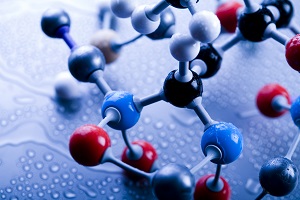
Technavio researcher, Bharath Kanniappan warned the industry, however, that they would soon need to adopt cloud-based solutions. He said: "Cloud-based software-as-a-service is likely to become the next logical step in the evolution of automation technology in the life sciences industry. Life science companies are becoming more comfortable with the concept of service-based technology architecture. Thanks to the shift towards a more cloud-based environment, they are expected to incur immense benefits such as reduced costs, greater flexibility, and enhanced functionalities."
The compound annual growth rate, according to the researchers, will reach 5% by 2020. Thanks, in part, to the adoption of cloud-based solutions in manufacturing execution systems, distributed control systems and SCADA systems. They also estimate that the industry will be worth US$ 5 billion by 2020.
The companies that have the monopoly over the global industrial automation industry in life sciences are: ABB, Emerson Electric, Rockwell Automation, and Siemens.
Source: Business Wire
- Details
- Written by: Quintus Potgieter
China is among the first countries to begin their implementation of security robots. The robots will be patrolling the Congqing district in China, and was built by the National Defence University. The robot has been named 'AnBot' and weighs in at a staggering 78 kilograms. It can travel at 11 miles per hour and stands at 1.5 meters tall. The university says that the robot also has anti-terrorism and anti-riot measures. It is also allegedly capable of eight hours of "continuous work".
Xiao Xiangjiang from China's National University of Defense Technology said: "AnBot has a high degree of autonomy, it could patrol, avoid obstacles and identify and charge on its own."
Edward Snowden gave his sarcastic two cents about the robot, saying: "Surely this will end well."
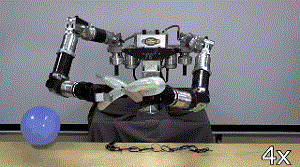 Elsewhere in the robotics world, engineers have been working on dexterity in robot arms and limbs. RE2's Robotics High Dexterous Manipulation System, according to Daily Mail, can tie knots, open zips, make balloon animals and more. RE2 is a company in the United States and maintain that their dexterous robots could one day be the helper around the house everyone has been searching for. And the replacement of clowns at kids parties, evidently. Kidding aside, the company is also certain that it will be able to form part of the ever-growing list of robots that are assisting hospitals in their surgeries today and could attempt to diffuse potential bomb threats.
Elsewhere in the robotics world, engineers have been working on dexterity in robot arms and limbs. RE2's Robotics High Dexterous Manipulation System, according to Daily Mail, can tie knots, open zips, make balloon animals and more. RE2 is a company in the United States and maintain that their dexterous robots could one day be the helper around the house everyone has been searching for. And the replacement of clowns at kids parties, evidently. Kidding aside, the company is also certain that it will be able to form part of the ever-growing list of robots that are assisting hospitals in their surgeries today and could attempt to diffuse potential bomb threats.
Bloomberg, however, maintains the most innovative and future-ready work in robotics is happening in MIT. They sat down with MIT computer science and A.I. lab professors John Leonard and Daniella Rus.
Leonard talking about the work they do in robotics said: "I think there's something special in the air at MIT, it's a very interdisciplinary culture. I'm in mechanical engineering, Daniella is in computer science, we work across boundaries between fields to work together to create systems that combine the best multiple disciplines and a robot is one of the best embodiments of that."
The MIT professors are hoping that in the next five years they would have made robots more intelligent, building robots faster and making robots and humans work alongside each other even more so than they are doing already. "In five years I think having a car that is much more highly automated that will impact your life," Leonard said. The professors also showed off a fully 3D printed robot that was ready to operate by just adding a battery and a motor.
NASA will also be utilizing MIT's robotics testing facilities after they gifted the university two of their Valkyrie humanoid robots to play around with. NASA's intention is to measure the feasibility of taking the robots to Mars and then letting the robots do tasks that would've required manpower in the past. Russ Tedrake, who is leading the project said: "Our work is about vetting the robot and seeing what is capable of. If we can integrate the autonomy work with our planning and control algorithms, it could result in an unprecedented level of autonomous capabilities for a humanoid robot." [Via: MIT Computer Science and Artificial Intelligence Laboratory]
Here the teams at MIT assemble the humanoid:
- Details
- Written by: Quintus Potgieter
Civil engineers in the United States have observed the current problem Miami has with floods. A new study by Miami-Dade County projected that due to the rising of sea levels, there will be a flood every day by 2045. Currently, Miami experiences 45 floods a year according to Fusion.net, this number would rise to 80. The Union of Concerned Scientists (USC) perused data that the Army Corps of Engineers compiled and as a result are issuing the latest warning for something to be done.
The USC have since released a report in which they say:
By 2045, sea level in Miami-Dade County is expected to rise about 15 inches above current levels, according to a projection by the US Army Corps of Engineers. With this increase, in just 30 years' time, flood-prone locations in Miami-Dade County's coastal communities would face roughly 380 high-tide flood events per year, and the extent of tidal floods would expand to affect new low-lying locations...
A one-foot increase in sea level is estimated to threated up to $6.4 billion in taxable real estate in the country overall

Now, what civil engineers are doing in the Miami-Dade County area could redefine what other coastal towns or villages do in the event that sea levels rise to the extent that they are in Miami.
The country has currently pumped $20 billion into storm protection efforts after Hurricane Sandy in 2012. The Army Corp Engineers were also tasked with surveying the areas in trouble of immediate flooding. They concluded that 6 million people are in vulnerable areas. The estimated damage that could be caused by 2045 is $616 trillion [Miami Herald]. It sounds like a civil engineering headache.
The University of Miami has also conducted research into the area and published their findings in a study titled: Increasing flooding hazard in coastal communities due to rising sea level: Case study of Miami Beach, Florida .
In the highlights section of the study, the researchers say:
Increasing sea level in the Miami area correlates with weakening of the entire Gulf Stream system.
Engineering solutions to SLR should rely on regional sea level rise rate projections and not only on the commonly used global SLR projections
The researchers are warning that Miami is an isolated case on its own and cannot be aligned with what is happening globally. What does, however, make the situation worse is the global climate change that adds inches to the sea level. The problem with Florida, according to the engineers researching at the University of Miami, is that they are most vulnerable due to the state's " low elevation, large population concentrations and economic importance."
Thus, engineers are installing new storm sewers and pumps, according to NPR. Miami Beach will also reportedly see a $400 million project that will include building 80 pump stations throughout the city. The more dire the situation becomes, the more civil engineers the state will look to employ to reverse the damage of oncoming tidal rises.
Here is a video with physical proof of what civil engineers have been doing since the end of 2014 in Miami. The government claims they will try and keep the Miami area dry for up to 500 years. Although, renewed case studies show that that is a tall order.
- Details
- Written by: Quintus Potgieter
Never has electrical engineering and audio engineering come together in quite an innovative way. Sony has announced a new iteration of their LED light bulb speakers. Yes, you read that right...lightbulb speakers. Sony Japan quietly launched the bulbs with Bluetooth speakers embedded into them last year in July.

The only two reviews from customers who bought it from Amazon.com, left unflattering responses as to how the light-speaker fared in quality. The one review by an anonymous Amazon user read: "Speaker is loud, but lack any trace of mod and bass. Decent light output. A Sengled light/speaker bulb is miles better. The remote control is a cool and nice feature." Another one by a user named Alowishus wrote: "Not a good product, sound is terrible." Then again, the product was only supposed to be sold in Japan.
The speaker clearly lacked in quality engineering and did not live up to any sort of hype Sony Japan had made to ensure that it was a good product. Bear in mind, the speaker back in July of 2015 cost $287.30, a hefty price tag for a product that wasn't widely bought and got negative reviews.
However, giving Sony the benefit of the doubt, a new and improved version seems to be making its way to the mass market.
The preview for the new and improved speaker makes it look like a product we would all want to buy. So why then did they initially launch something that lacked in quality? This is just one example of the thousand of products that are engineered that sometimes lack in the area of quality design. Anything from new lithium-ion battery units to the latest bridge that has been built can have poor engineering design quality. This is something that should be avoided at all costs. Although, companies that release consumer products sometimes rush the product to market and get the negative reviews that they do.
"Quality is obviously one of the driving forces for anything we do in engineering, it's a critical area," says Steve Mackay, the Dean of Engineering at the Engineering Institute of Technology. In the 35th episode of the Engineering News Network, the Dean's YouTube series, he speaks of a man that the Japanese utilized in the history of engineering called W. Edwards Deming who assisted in improving the quality of products that they manufactured. Mackay paraphrases Edwards Deming, saying: "If you try and focus on costs, you will find your costs tend to go up and your quality tends to go down. If you focus on improving the quality of the process you will tend to drive the quality up and eventually the cost will go come down."
Mackay gives engineers currently working on producing high-quality products some useful tips in ensuring premium quality throughout:
- Try and understand the process and the system really well. You will, therefore, avoid imperfections in a product.
- Where the variations in quality are coming from. What causes imperfections?
- Understand human psychology: What is the psychology of the guys working on the product that produce the final high high-quality?
- Details
- Written by: Quintus Potgieter
Can Elon Musk proves the critics wrong once again? Could he and a team of engineers successfully show the world that a transport system that could travel 760 miles per hour is viable? Hyperloop Technologies Inc. has now become Hyperloop One in a rebranding announcement, rebranding so they would not be mistaken for another company with 'Hyperloop' in the name. Several other announcements about Elon Musk's dream transportation system were made to the media yesterday. Hyperloop One says they have received $80 million in venture capital financing and have built a network of engineering partnerships that will assist in hopefully making the Hyperloop a reality.
The group also announced that they would be conducting the first tests for the feasibility of a Hyperloop in the Nevada desert. The Nevada Desert is becoming synonymous with testing out products from Elon Musk-run companies.
Cheif Executive of Hyperloop One, Rob Lloyd, said: "The hyperloop is real. It's happening now." The propulsion test will be an open air test where the engineers are certain they will be able to reach 400 MPH. Later tests will be done in a vacuum-sealed chamber and will test the capabilities of a hypothetical Hyperloop and will try and reach 700 MPH. They would be using a 1-kilometer track and will test several of the engineered technologies that could send the Hyperloop into the future and into our cities.
The first level of criticism came from the experts who said that Musk's $6 billion estimate for how much the Hyperloop will cost was labeled unrealistic. Experts claim the Hyperloop would cost much more.
Lloyd told the Wall Street Journal: "We will reduce the cost of the hyperloop until it is two-thirds the cost of a high-speed rail system at three times the speed."
The rebranding announcement also comes with a new competition named the Hyperloop One Global Challenge. This will see the continuation of previous competitions of this sort which allow engineers to design mock-ups of what the Hyperloop might look like.
Visit the Hyperloop One website to see how far the engineers get in redesigning the future of public transportation.
